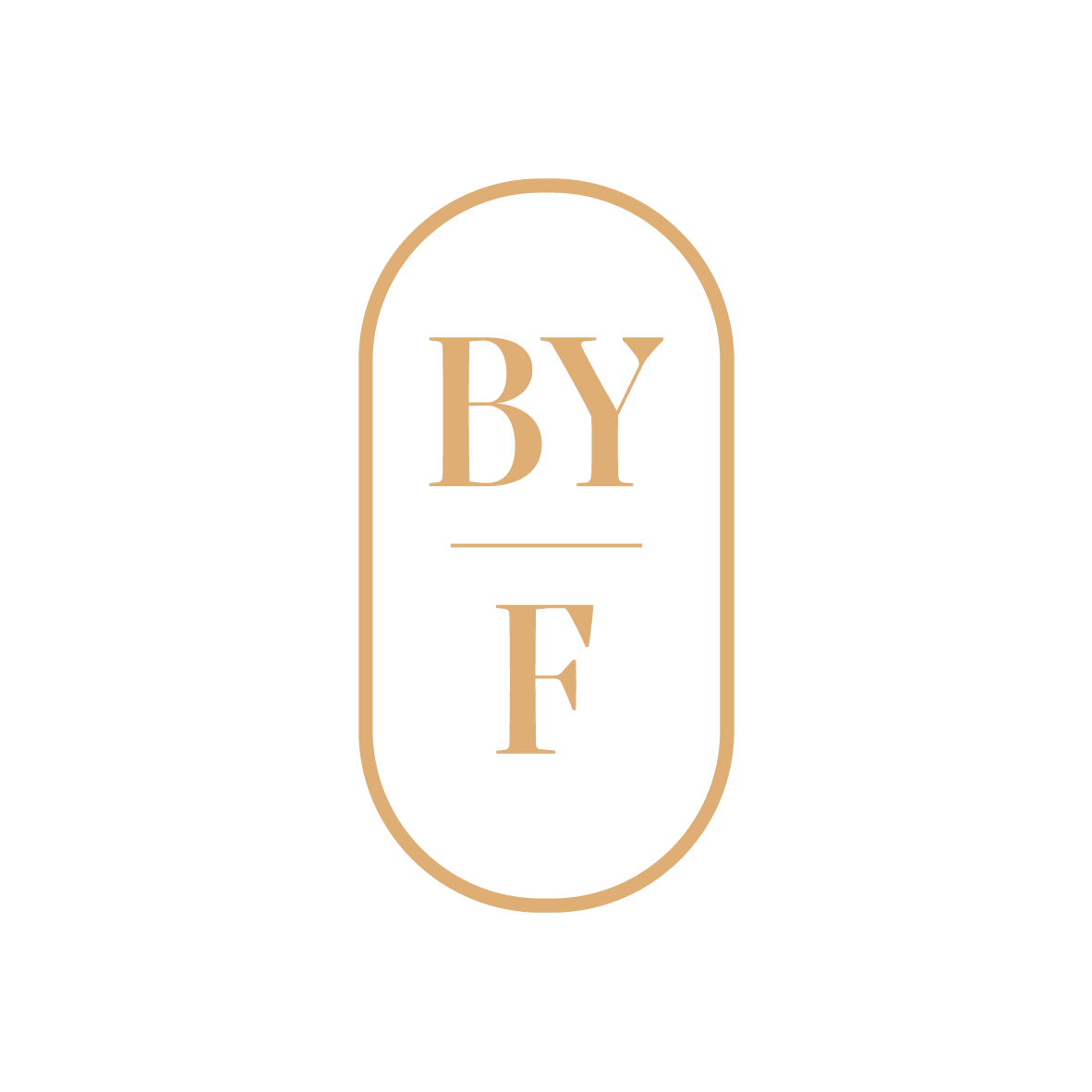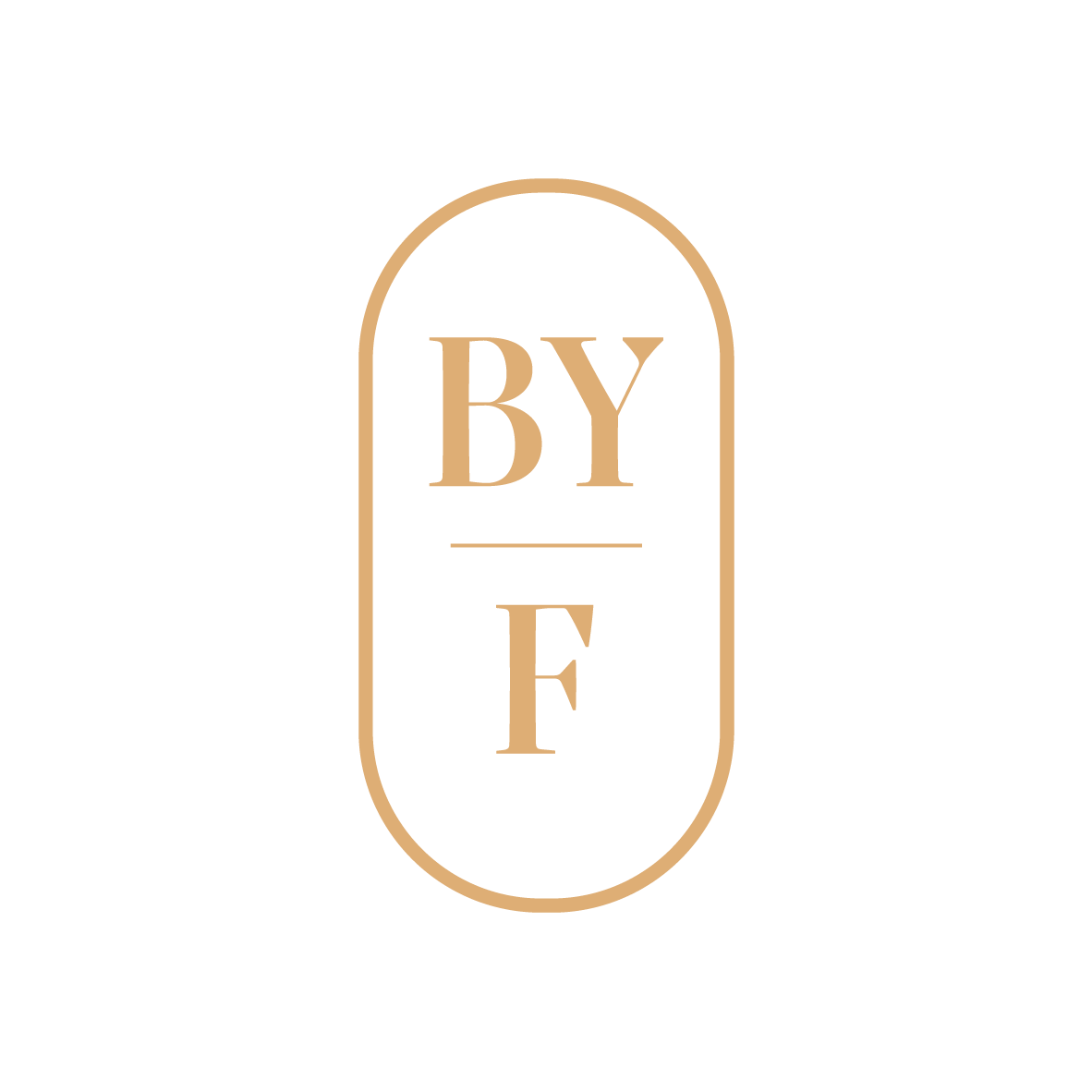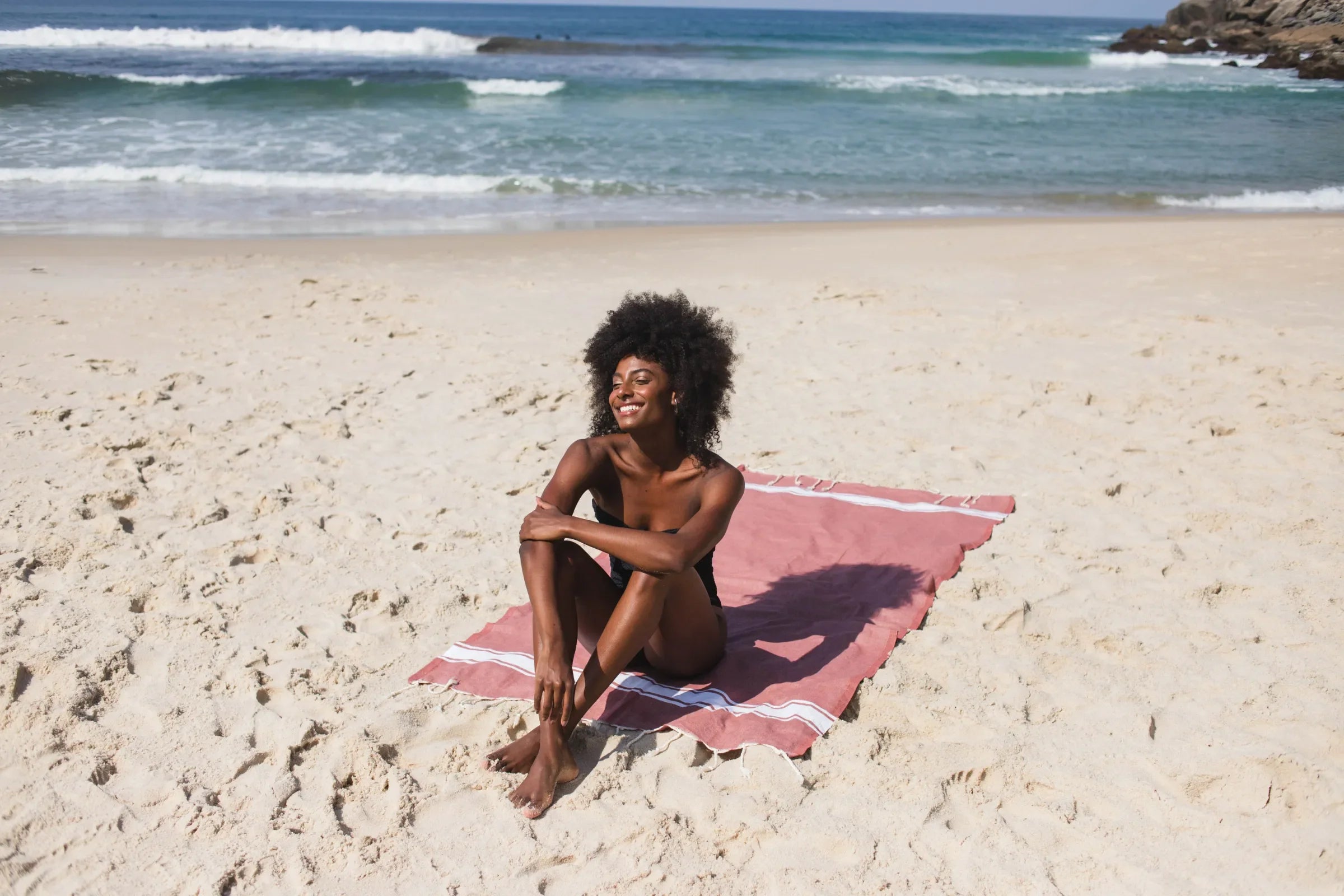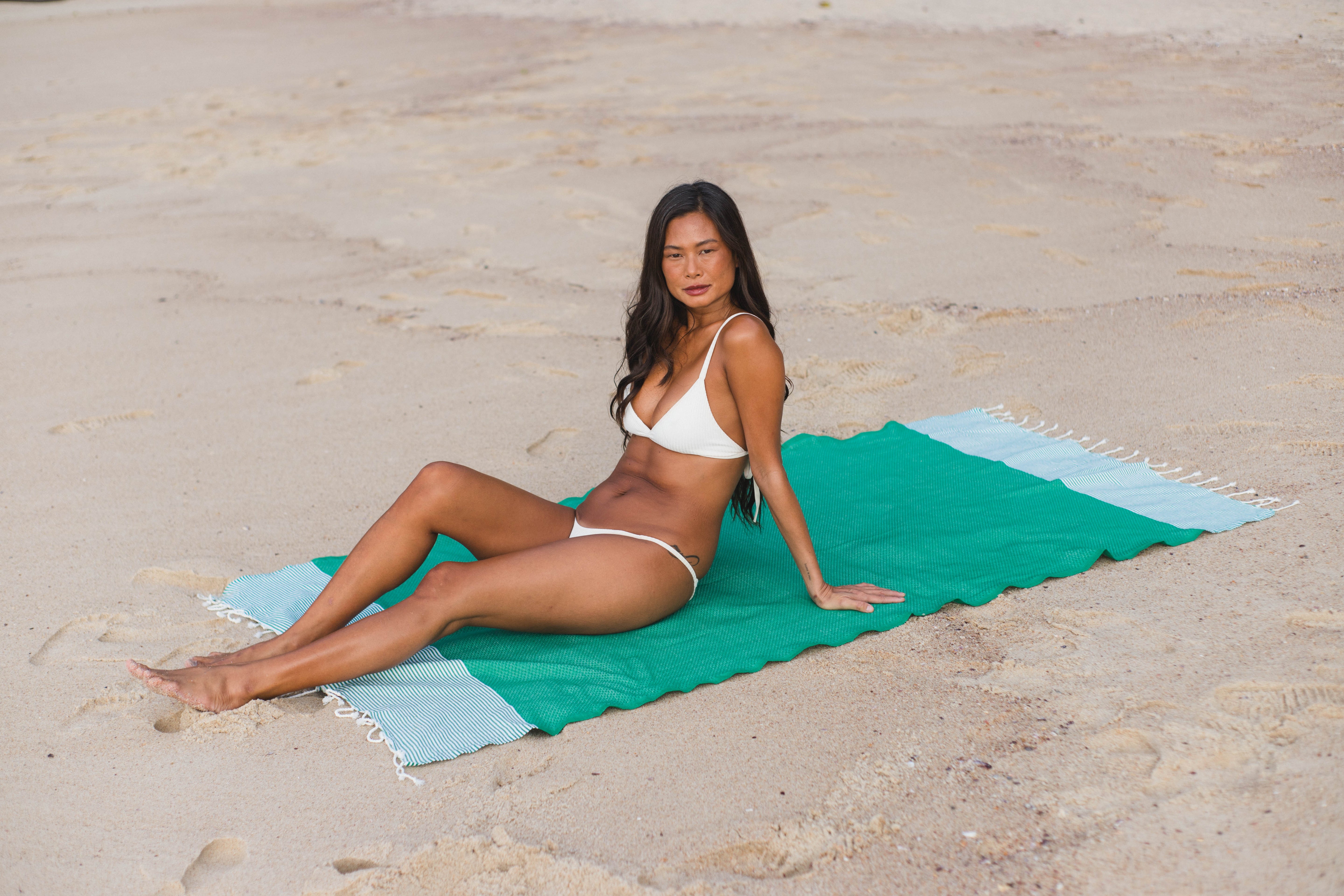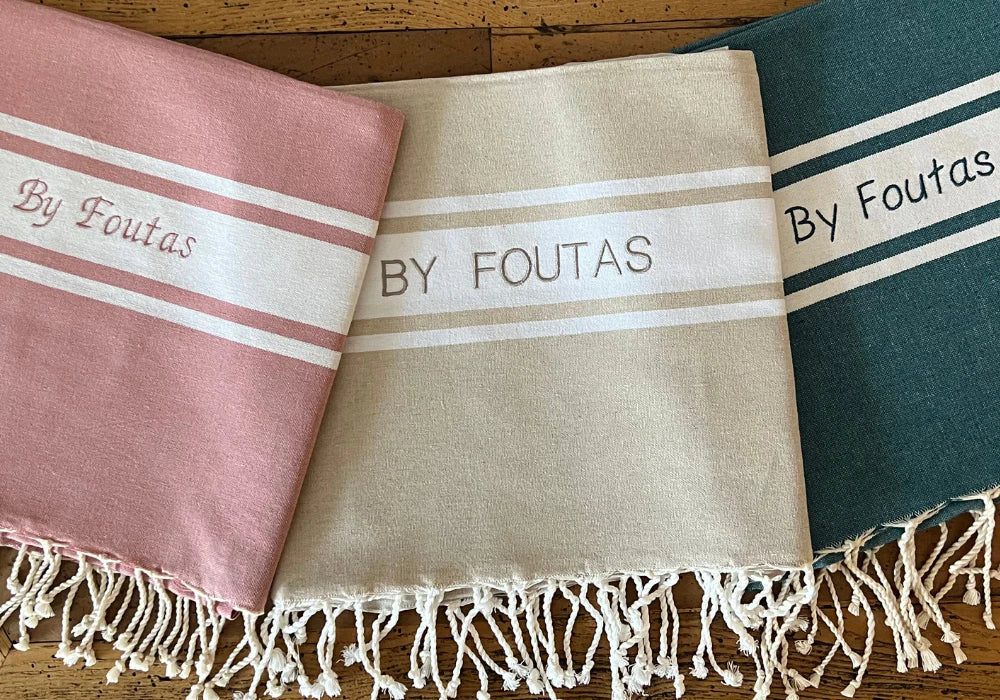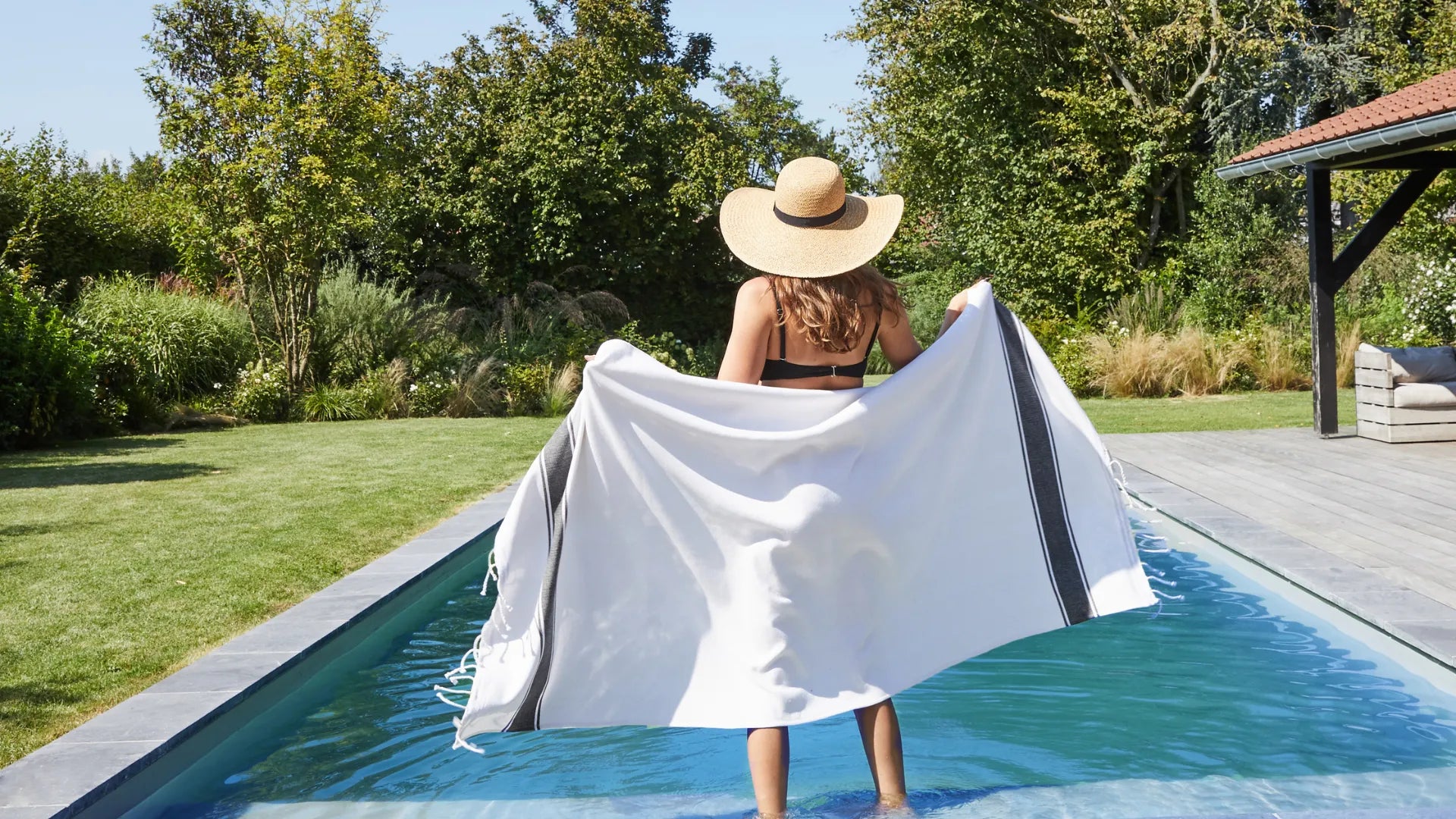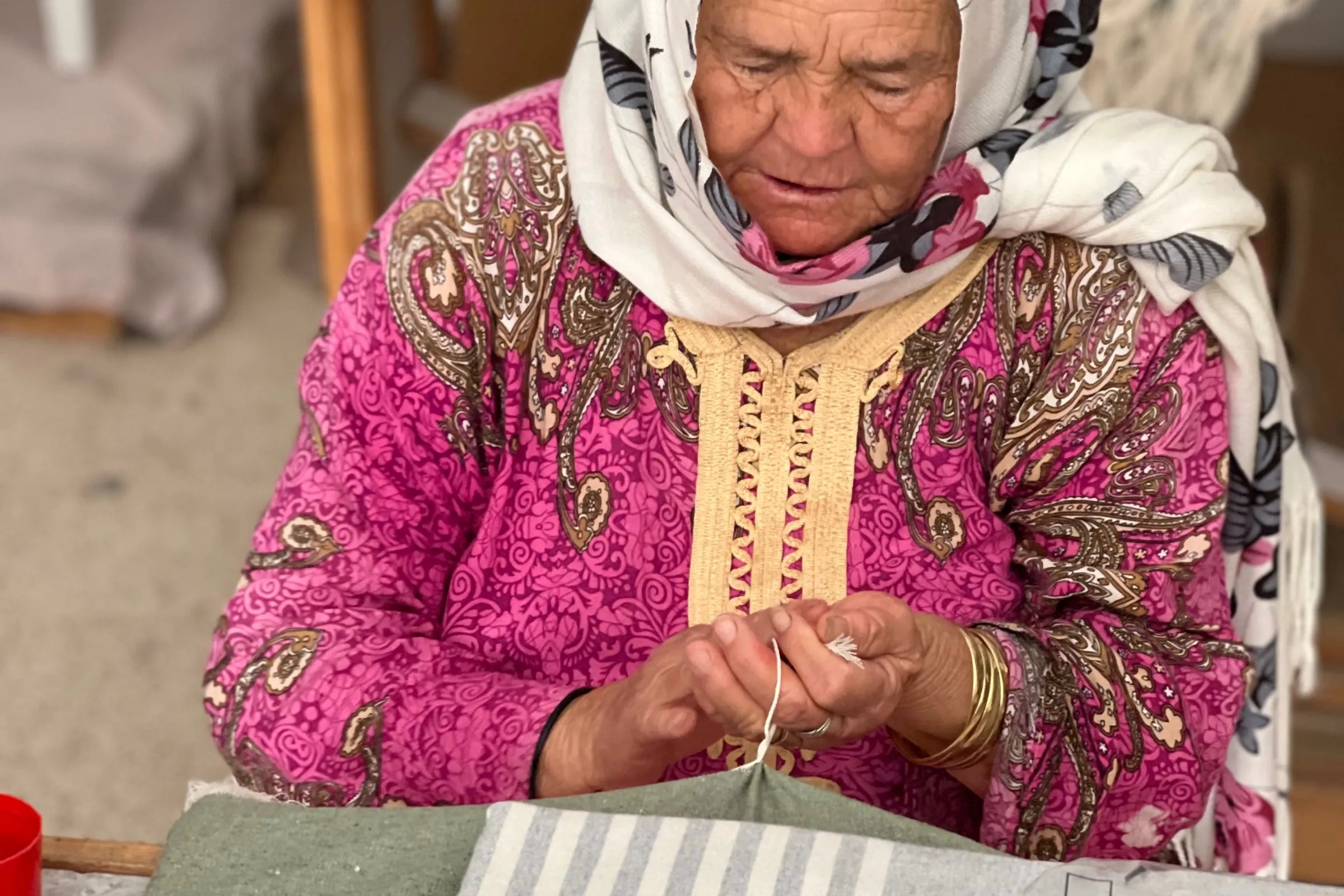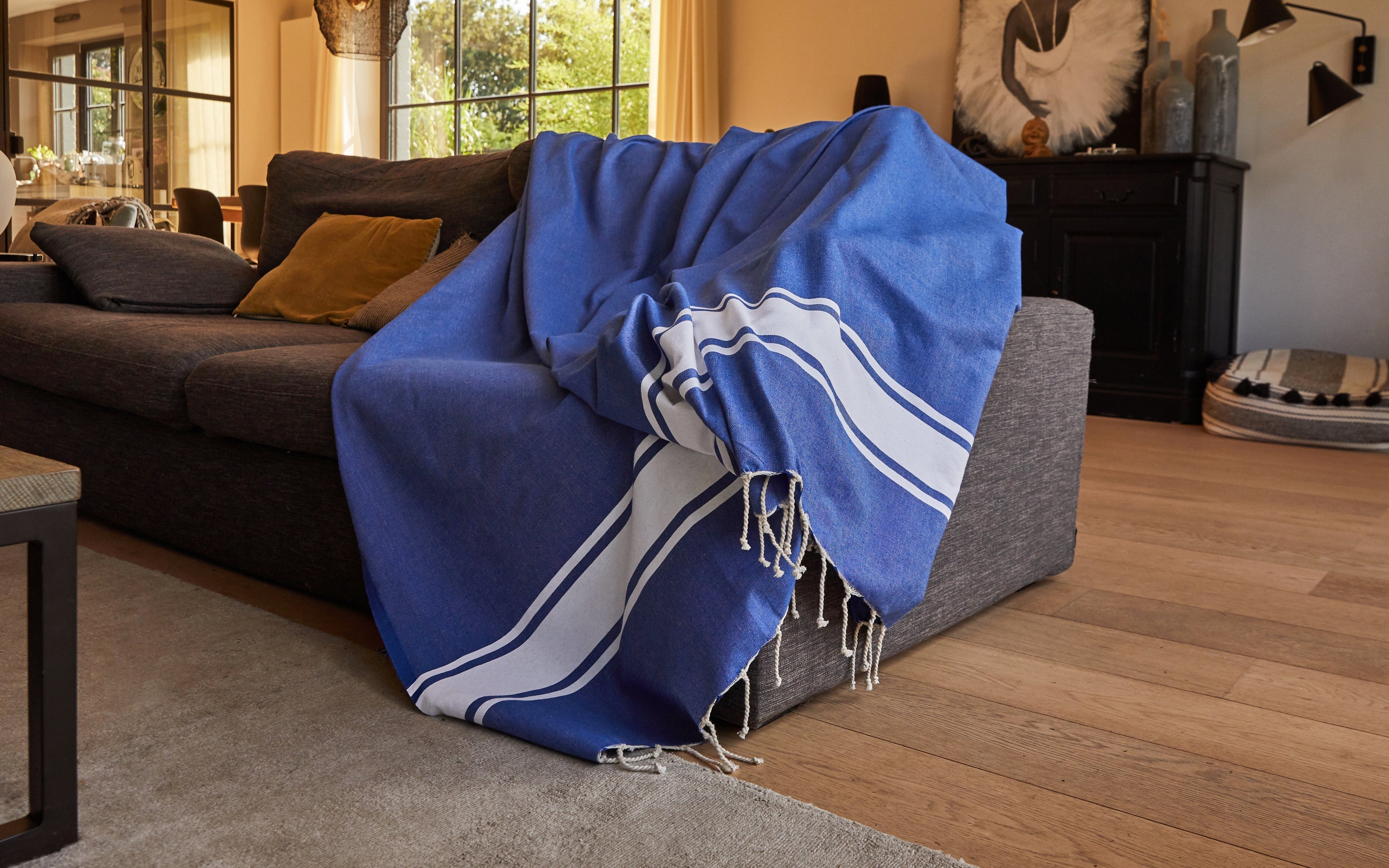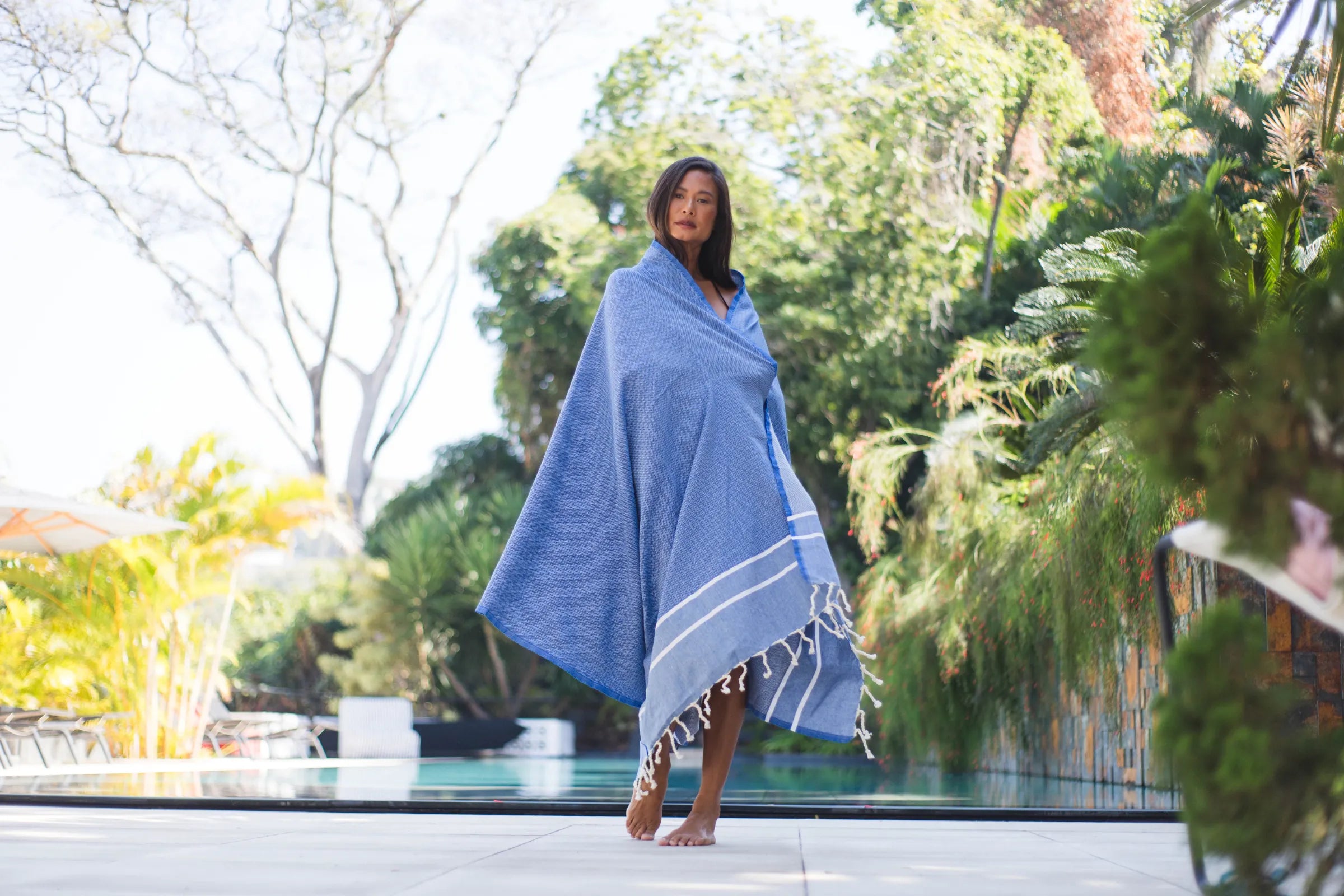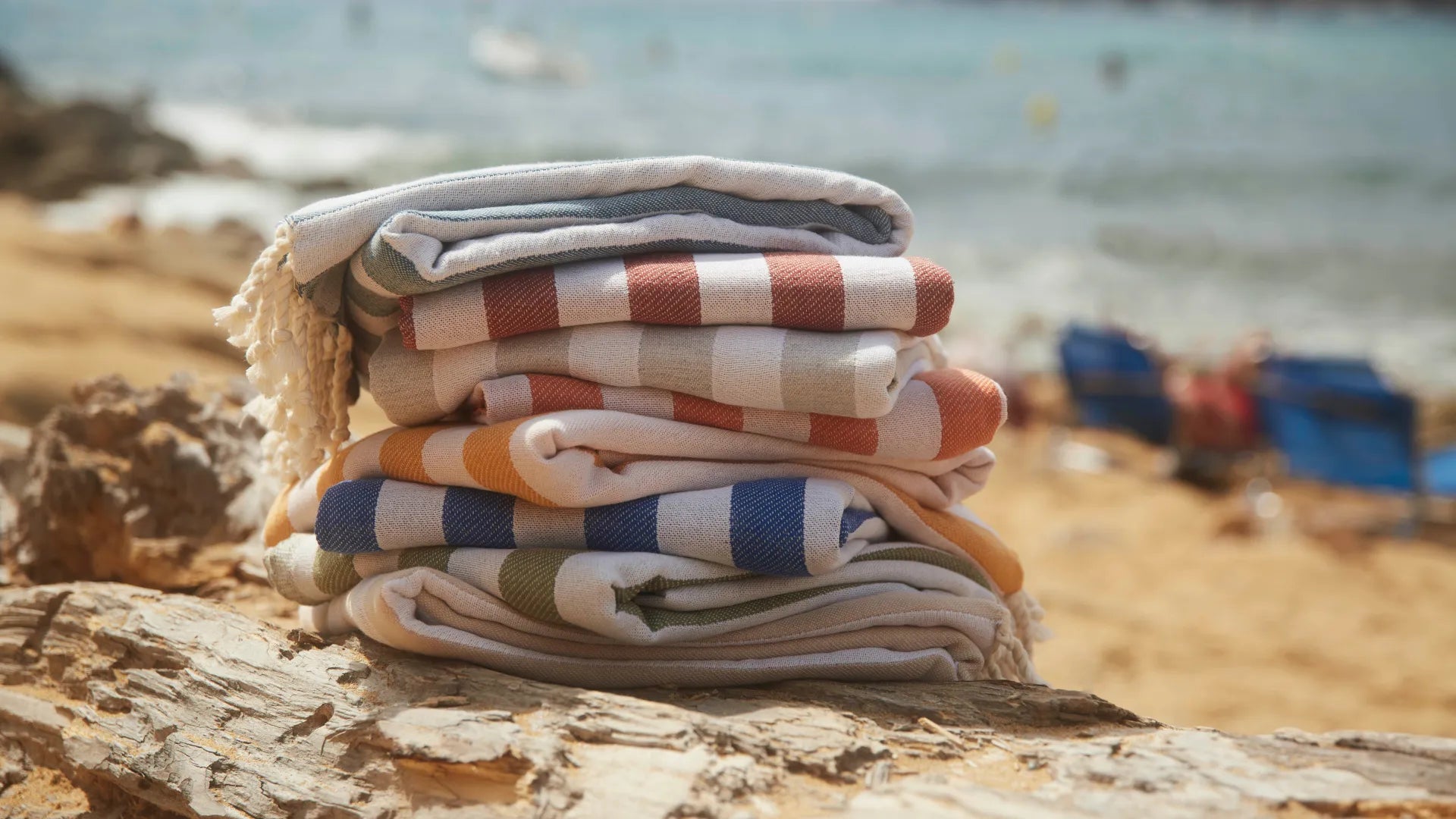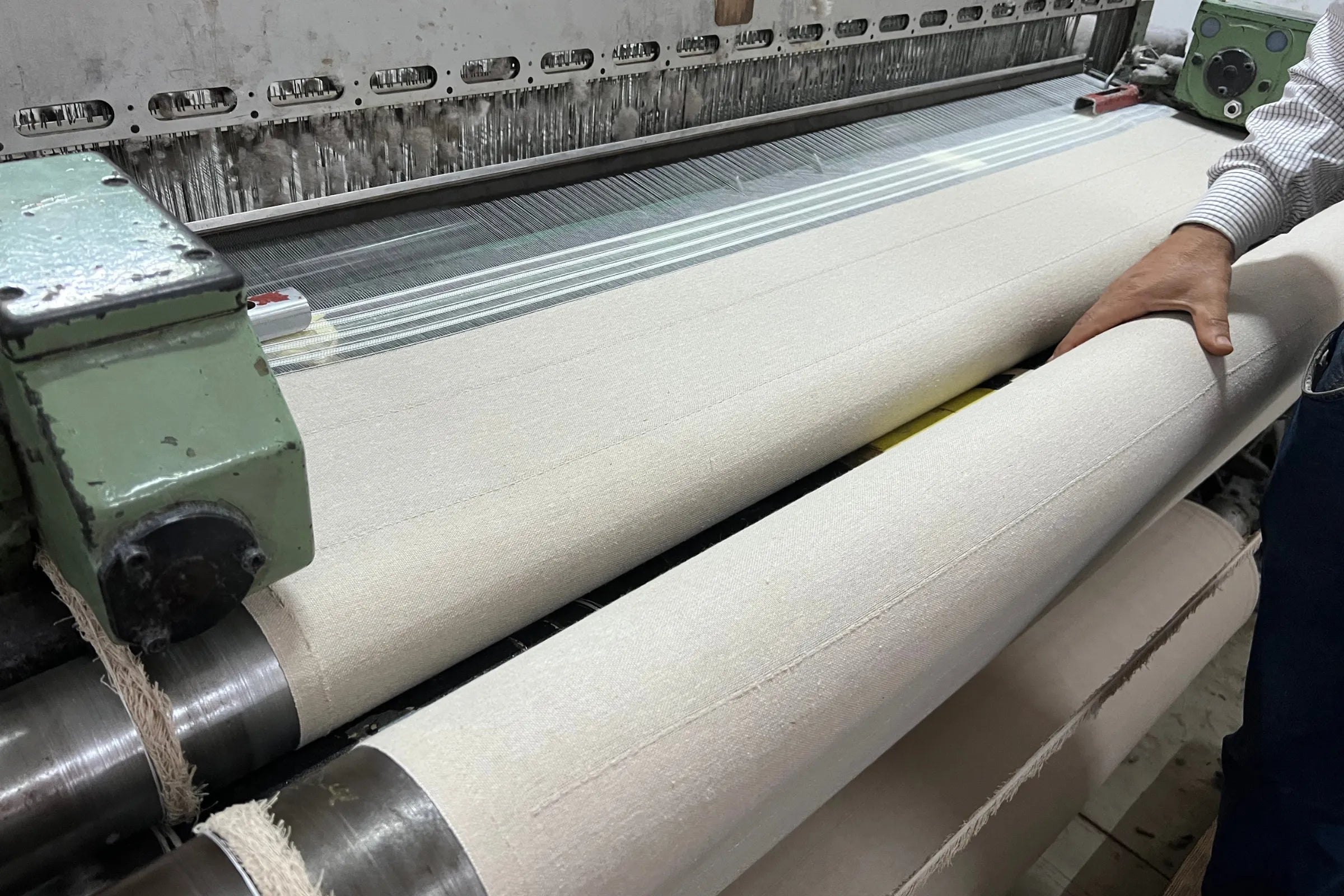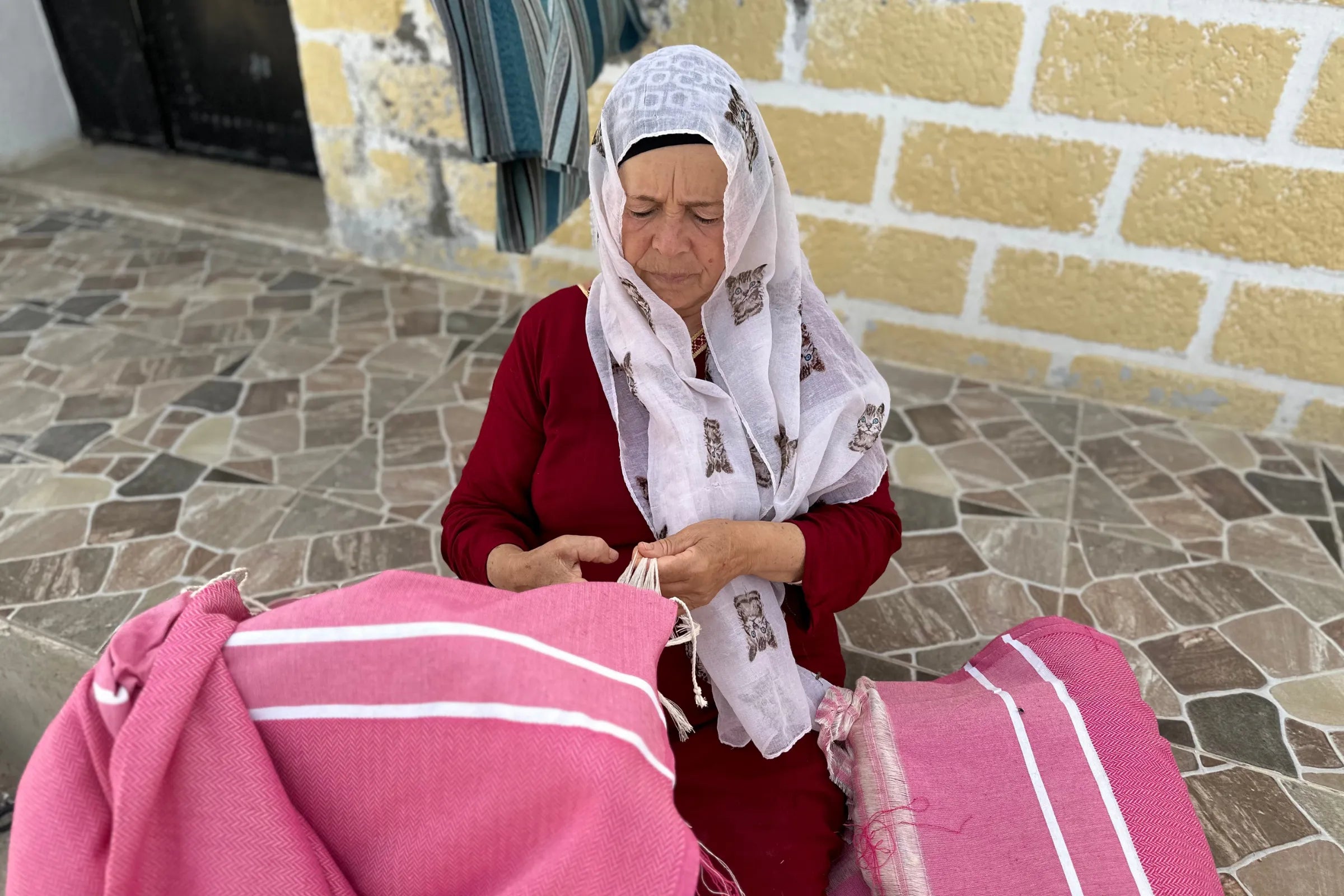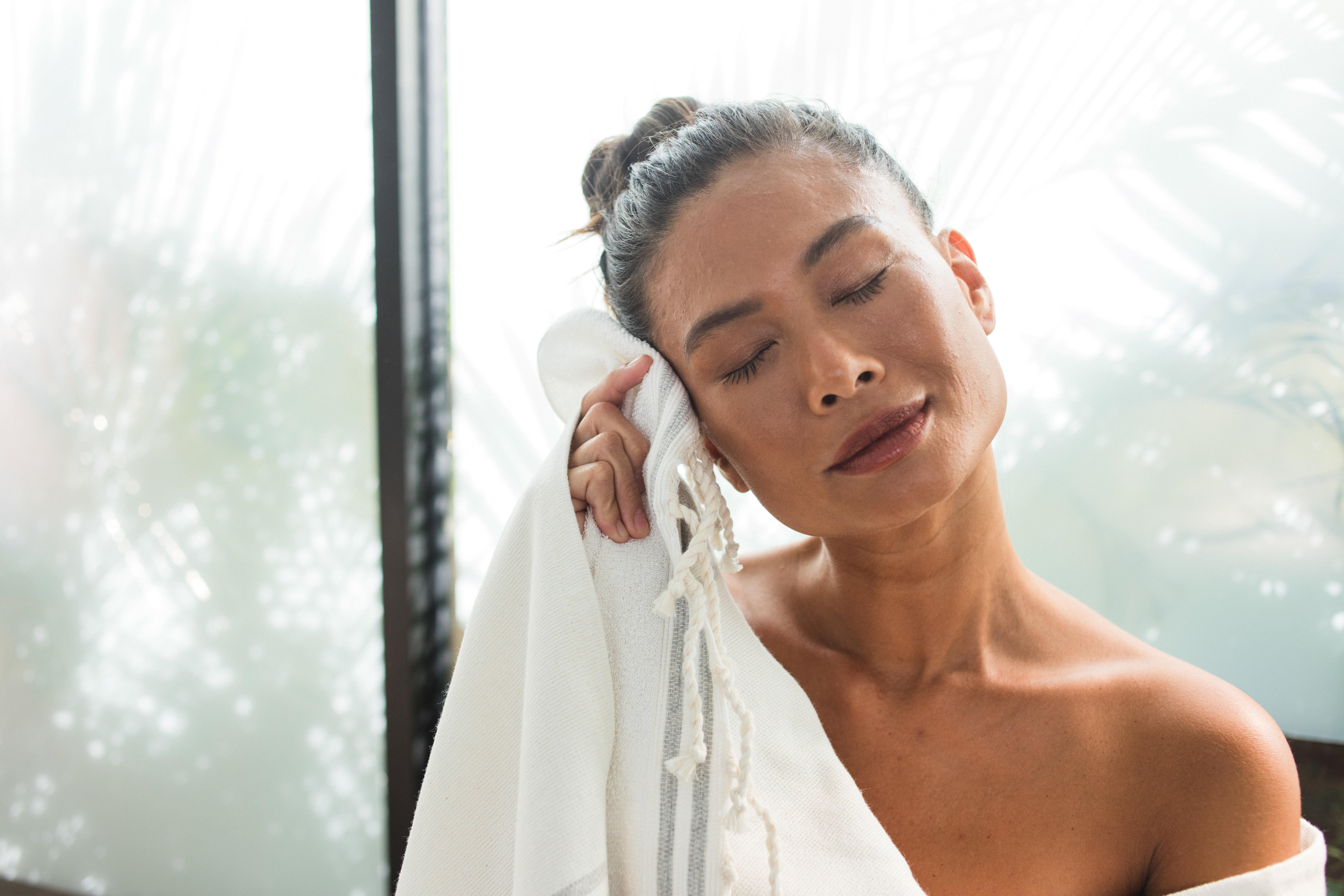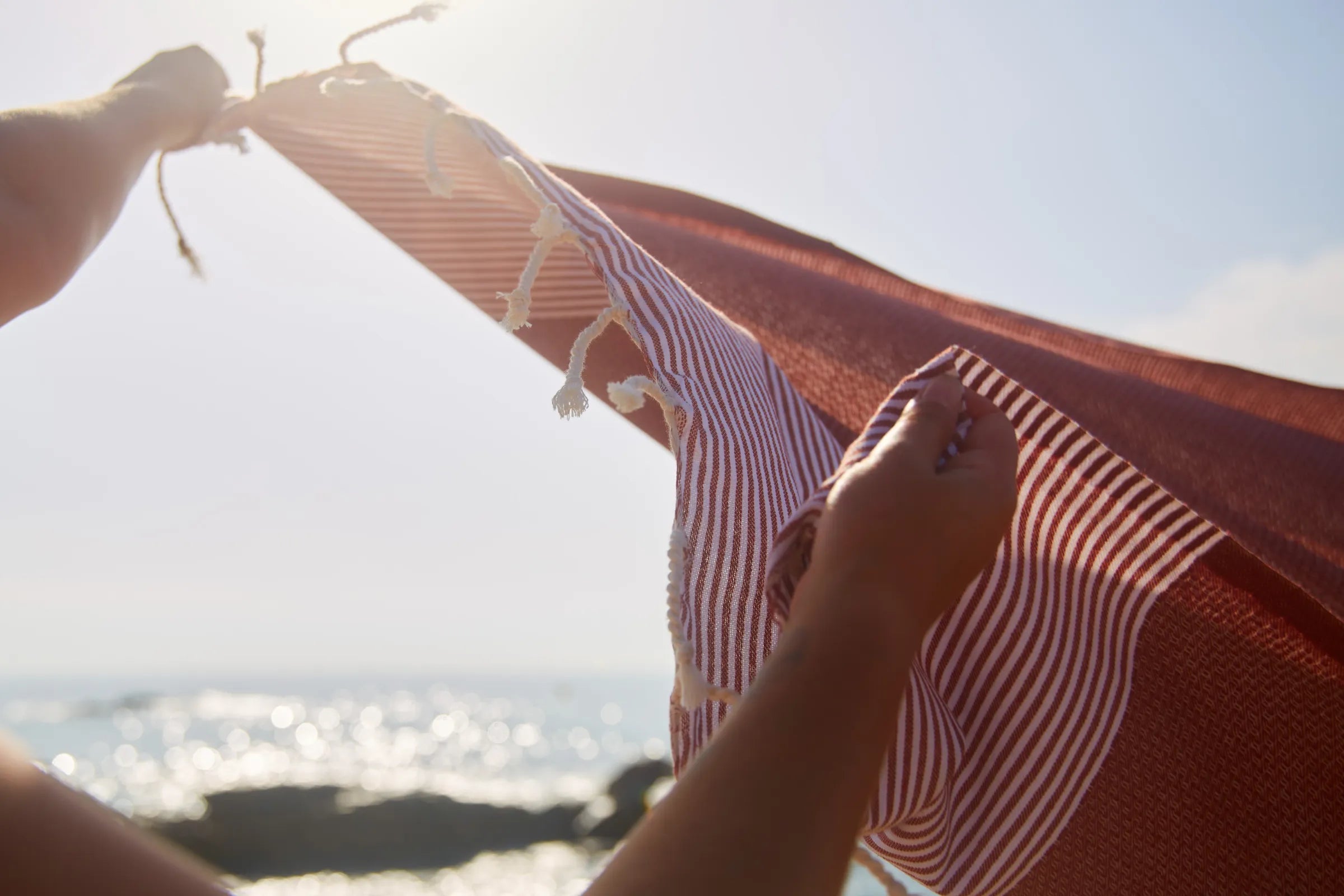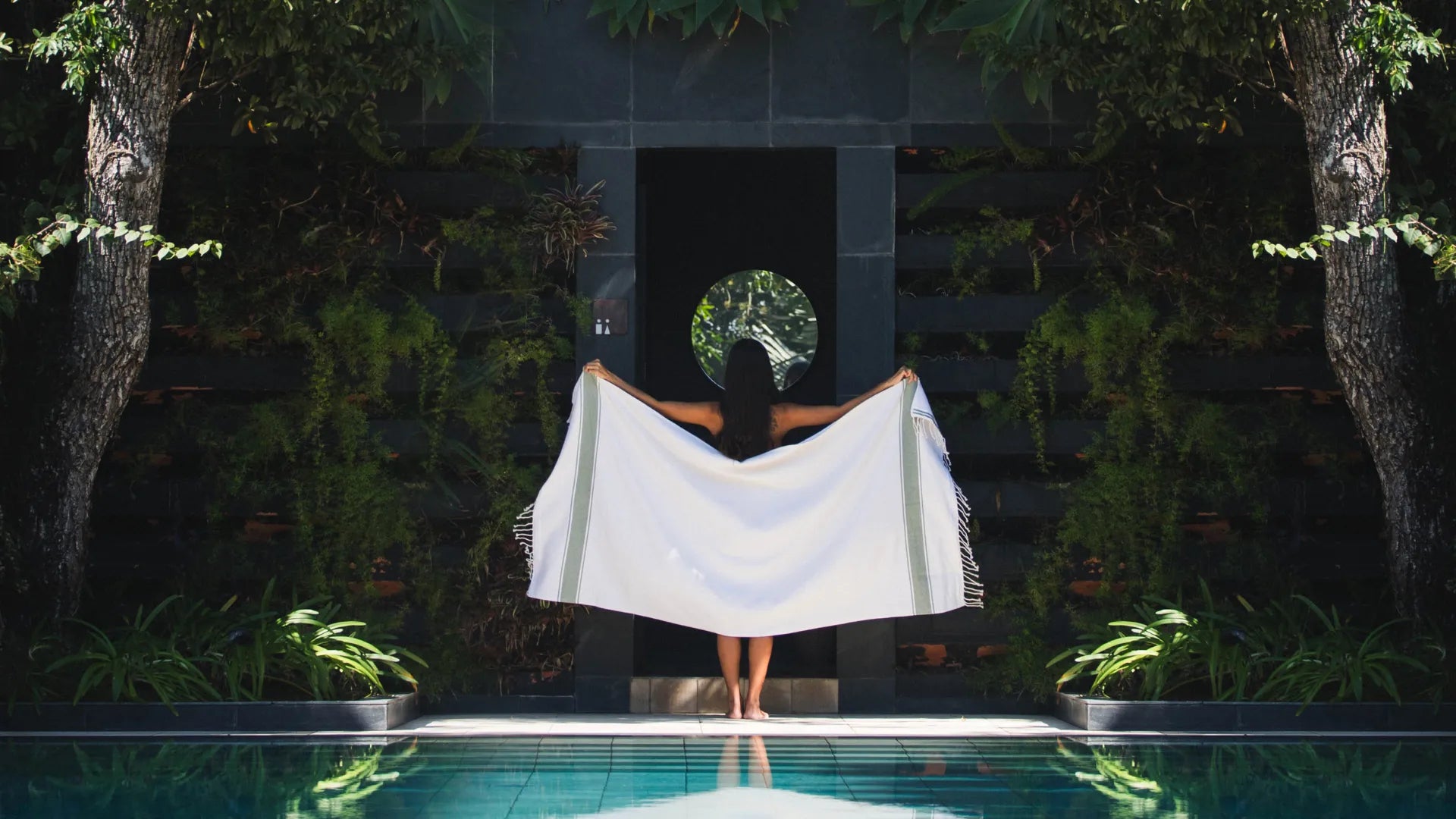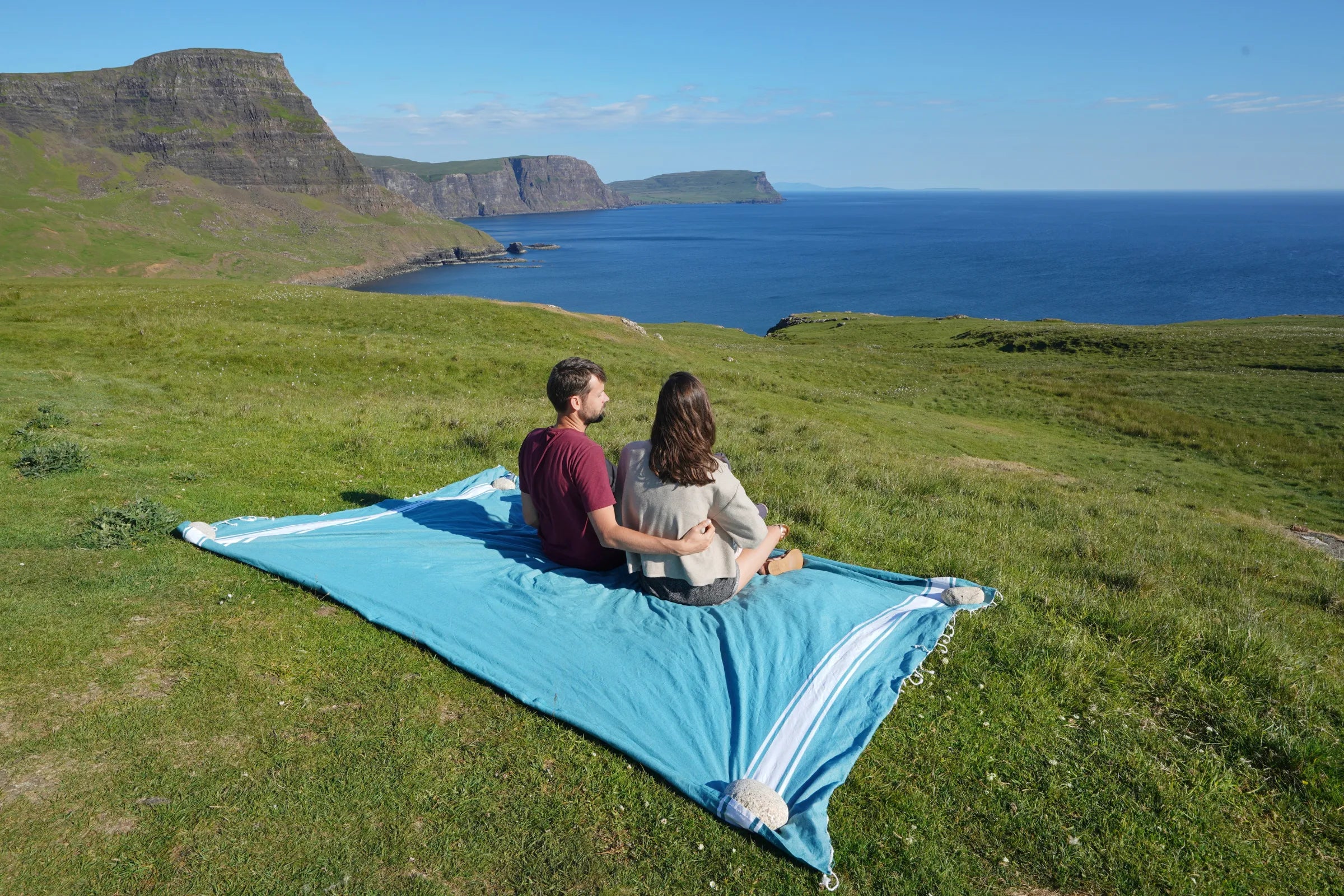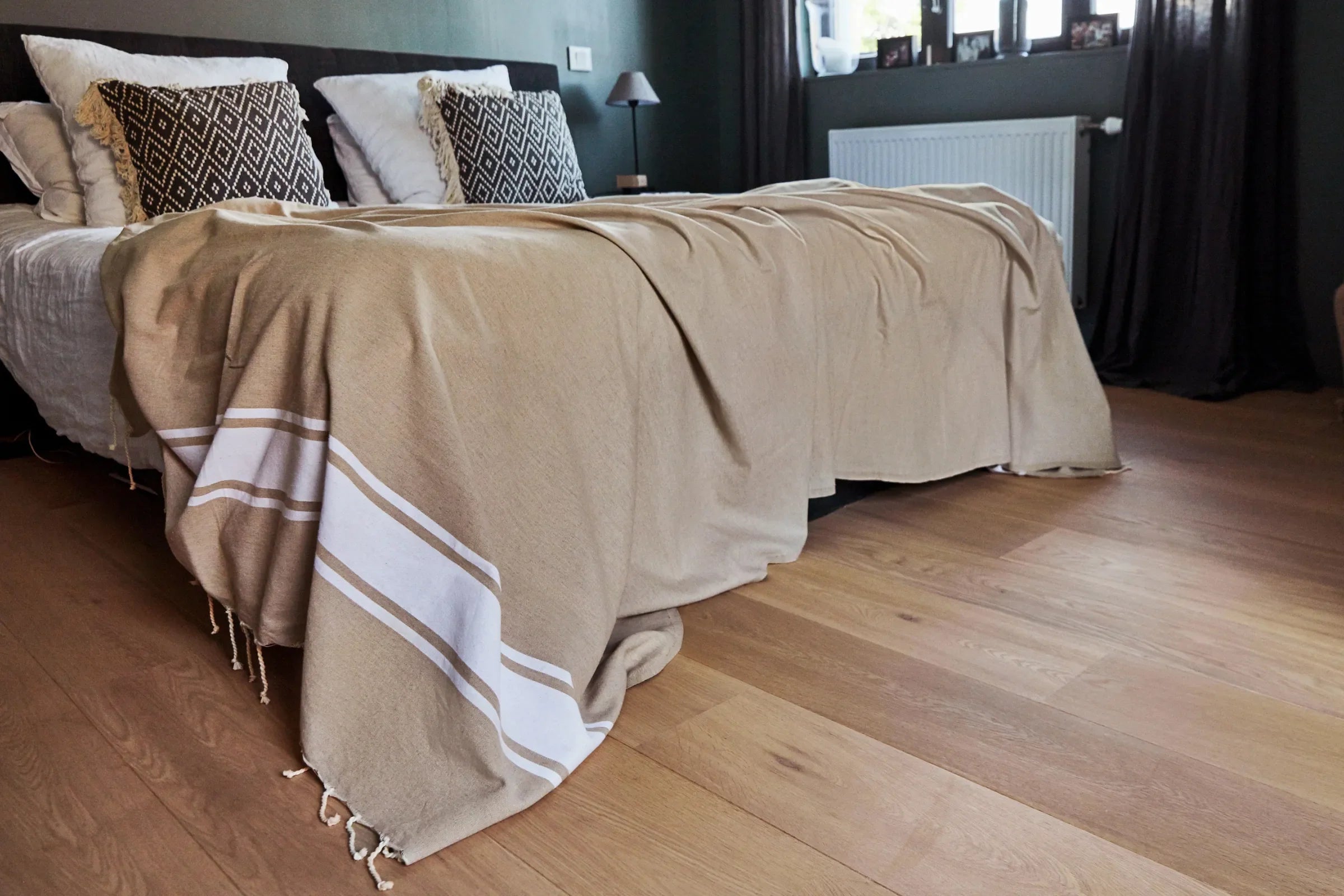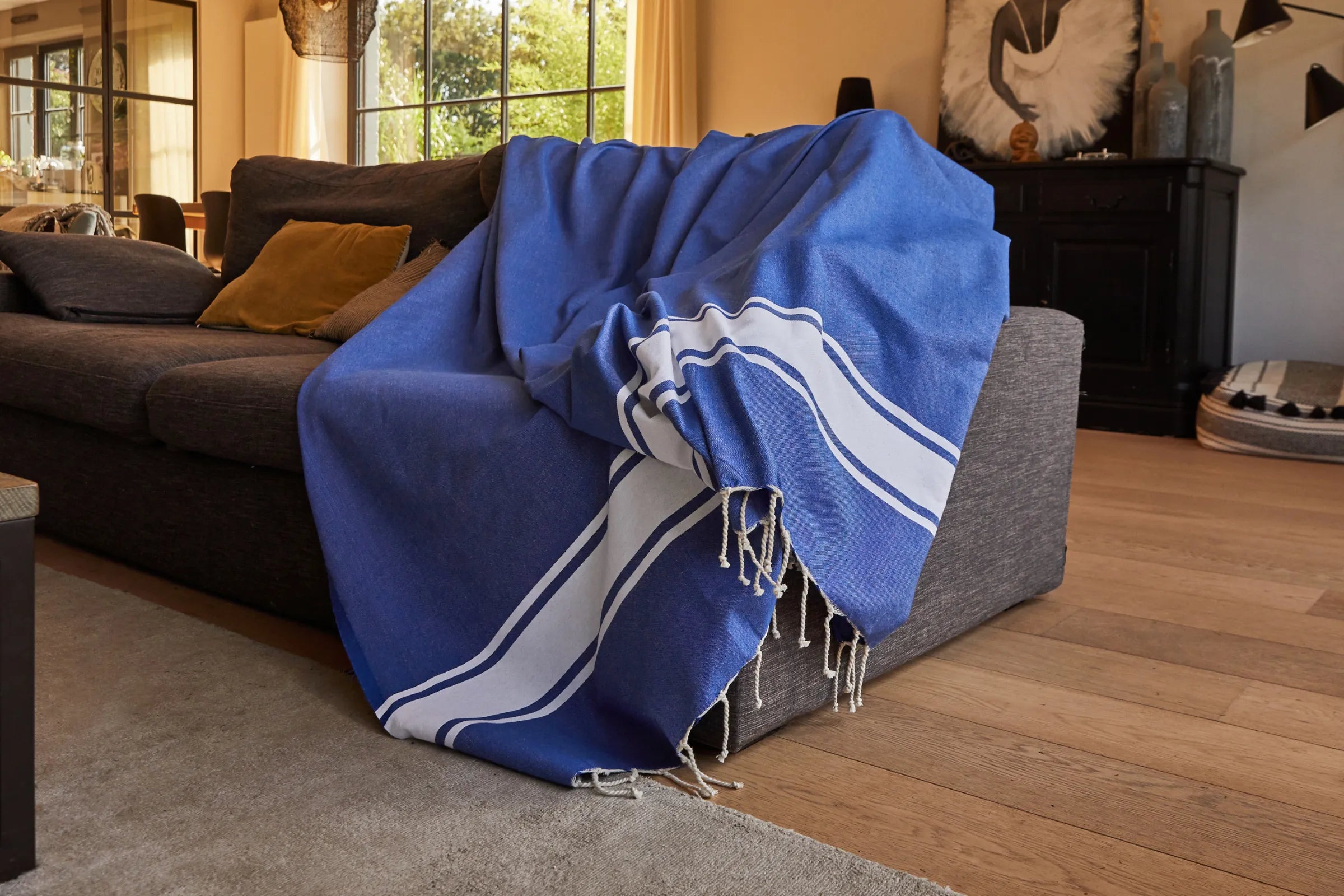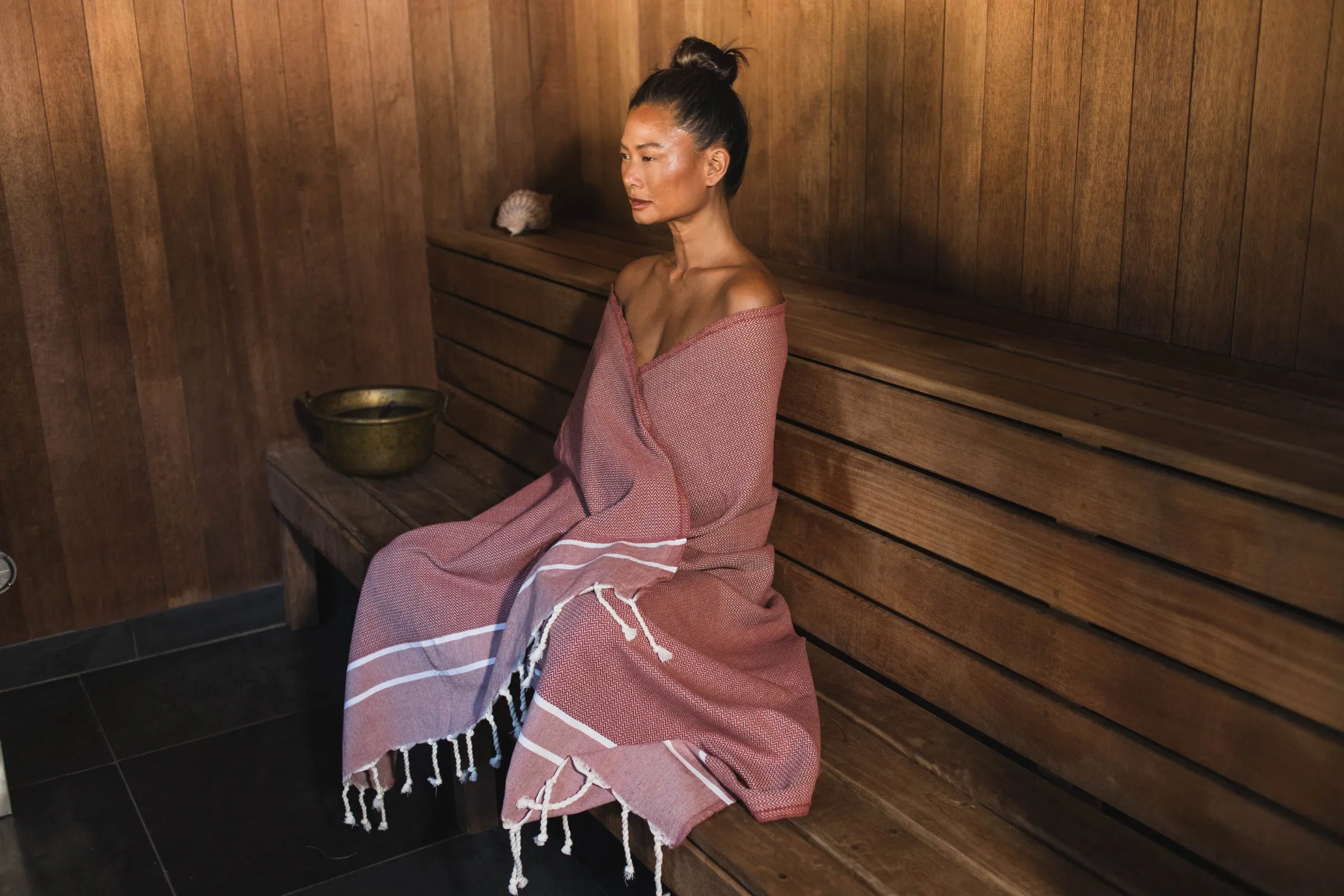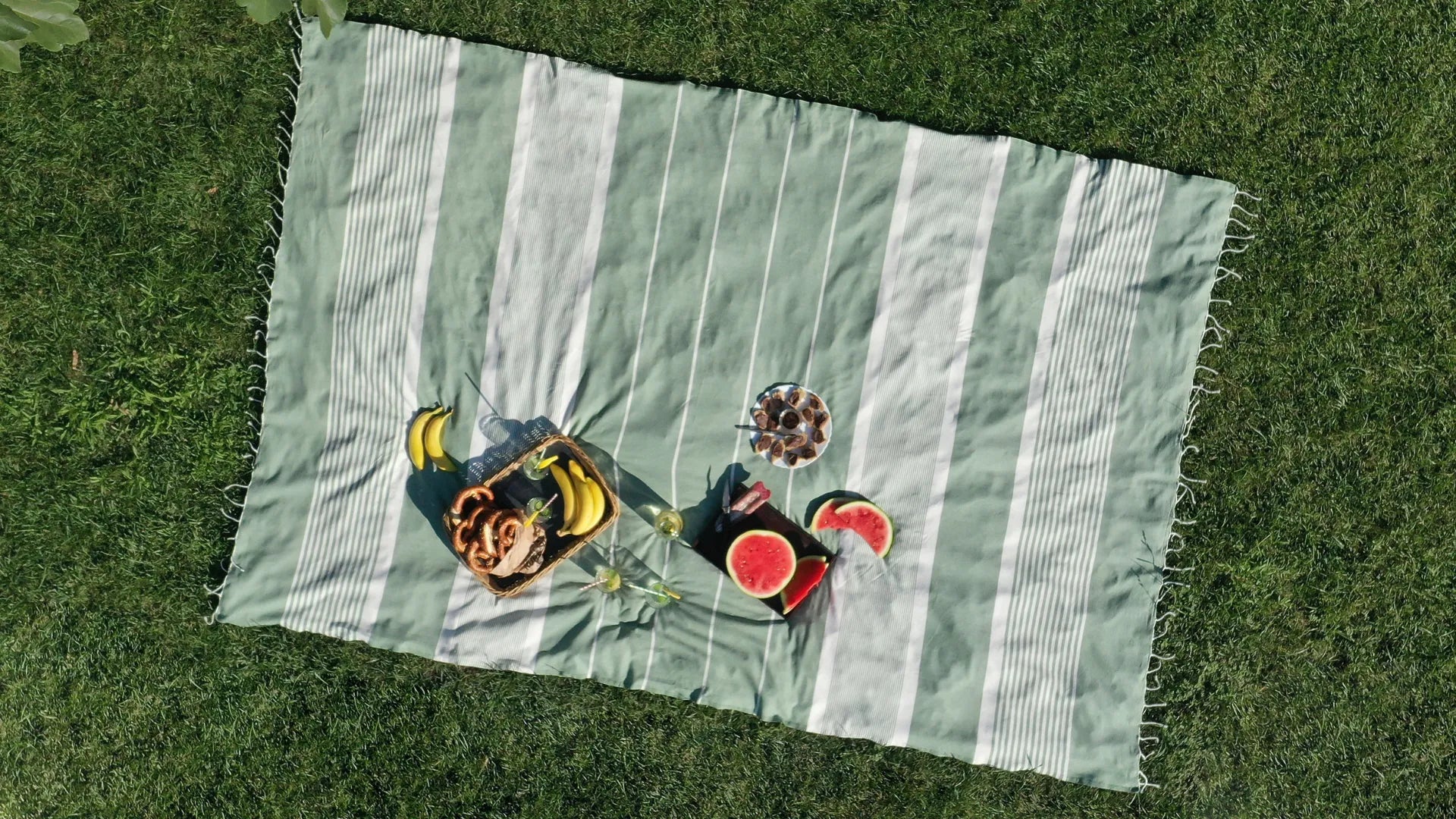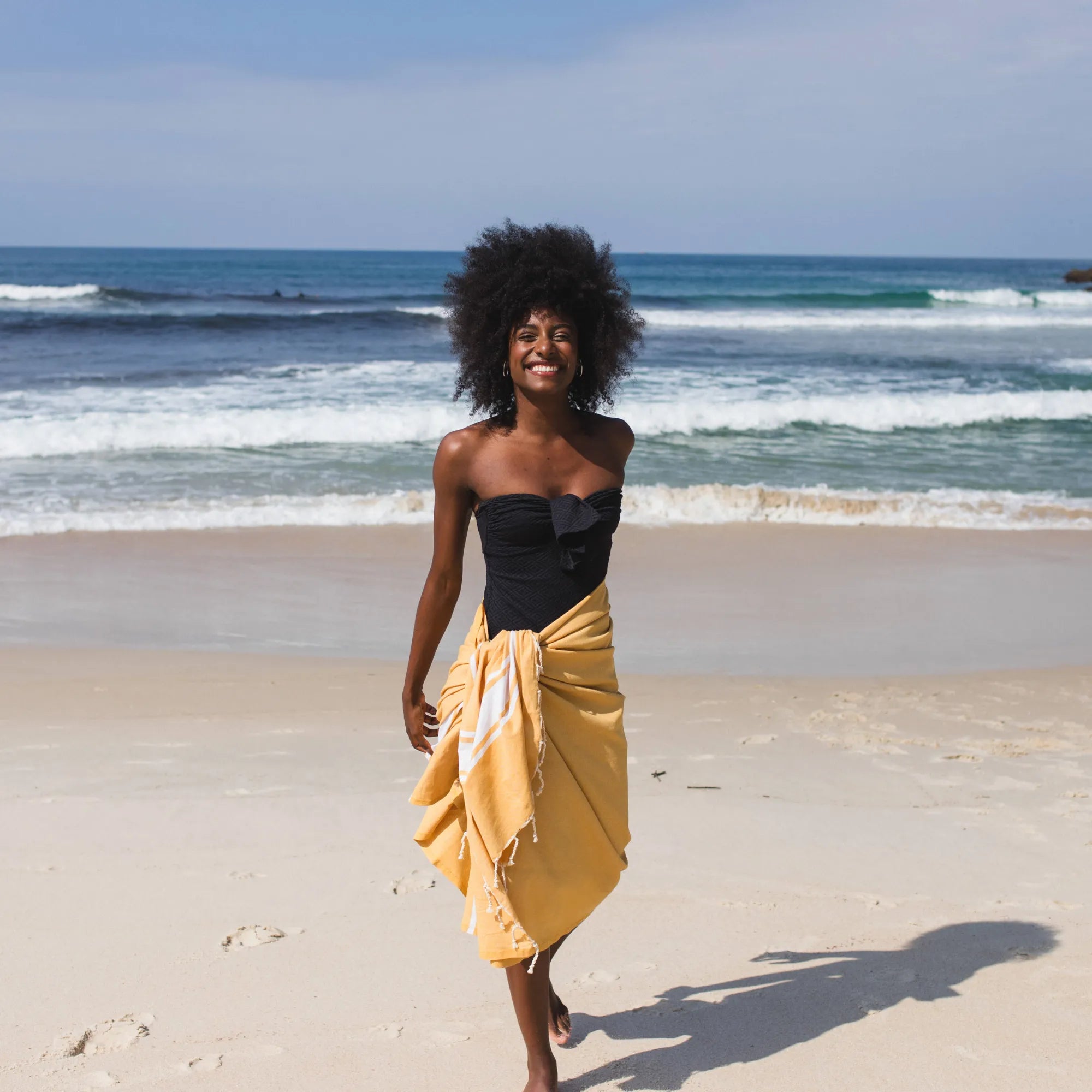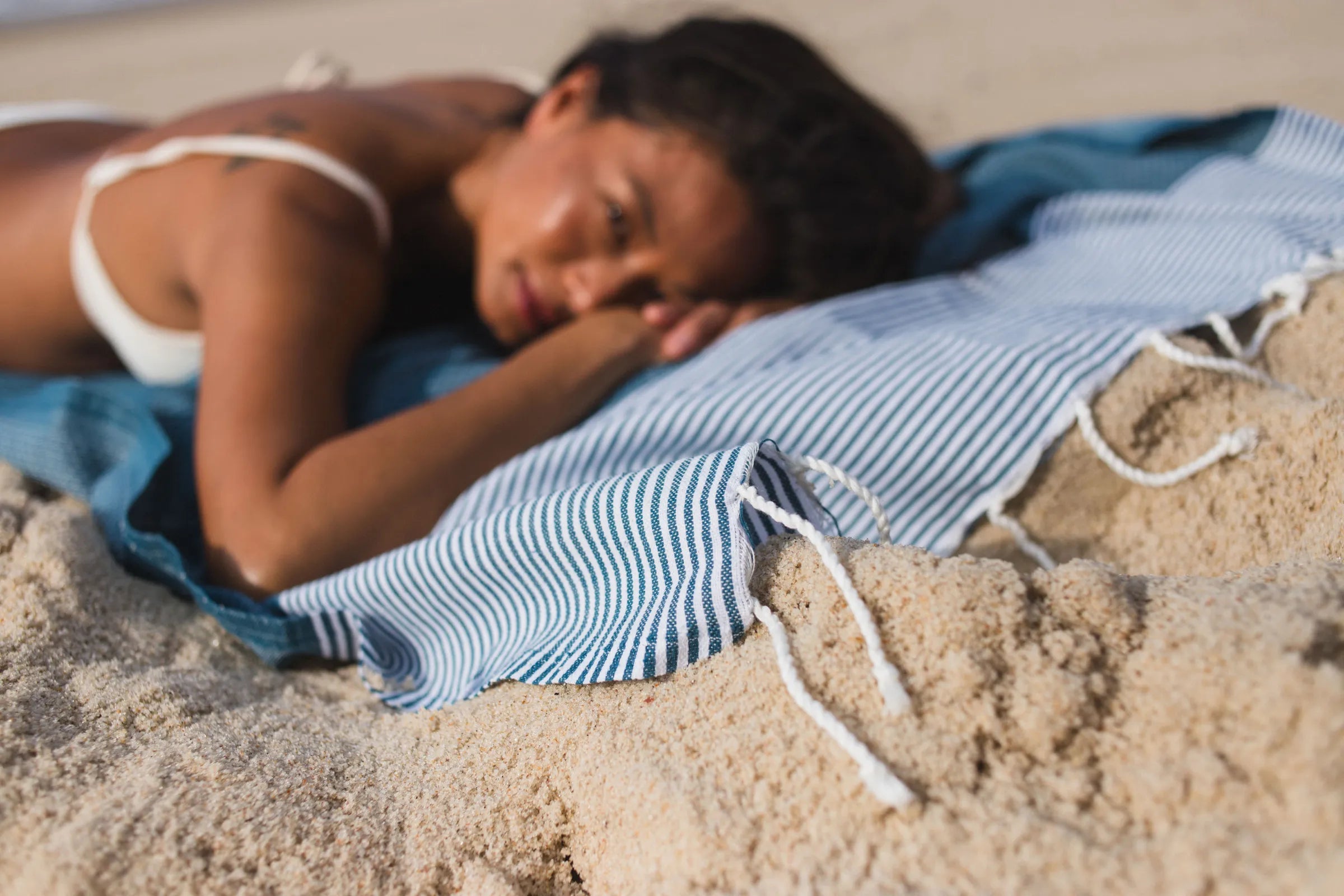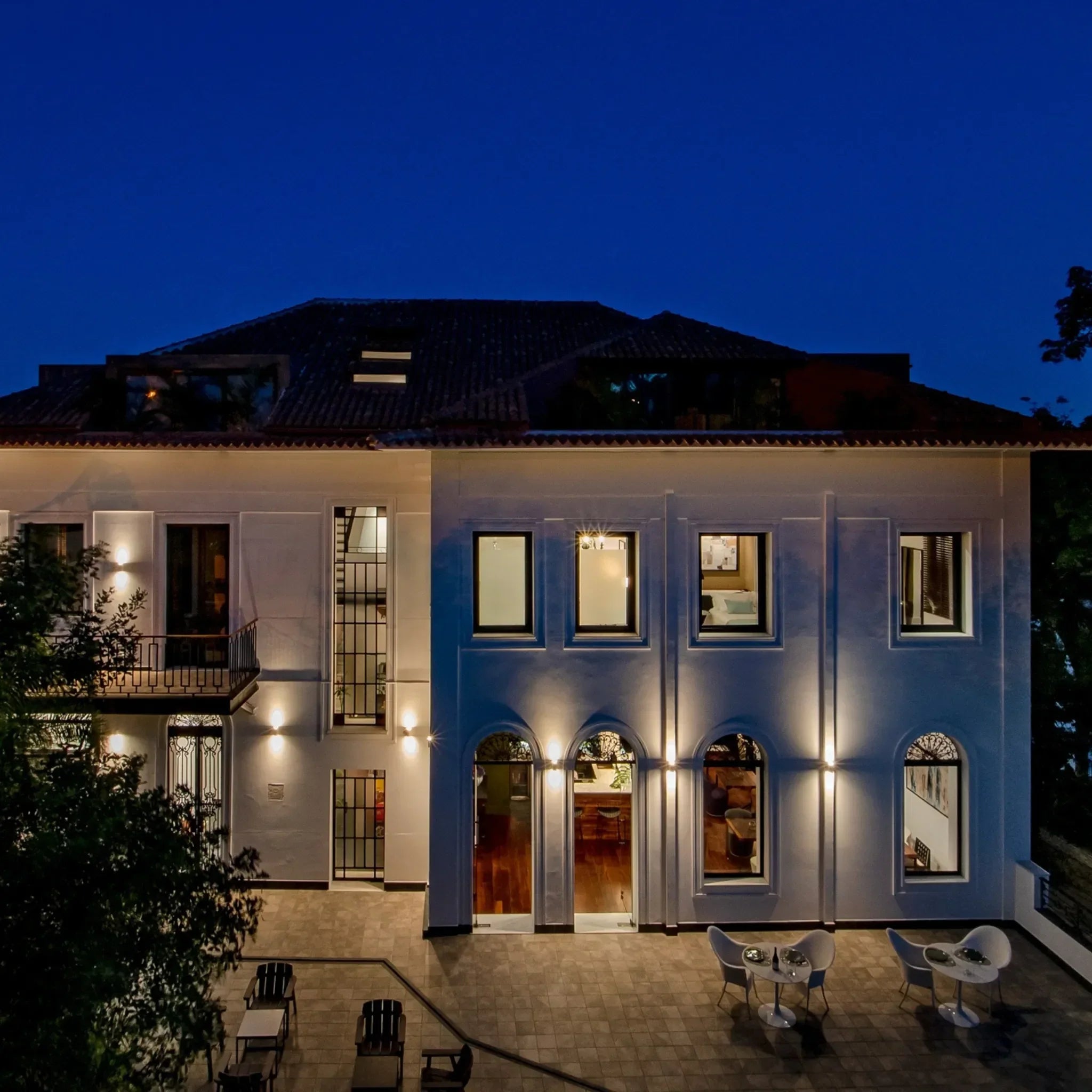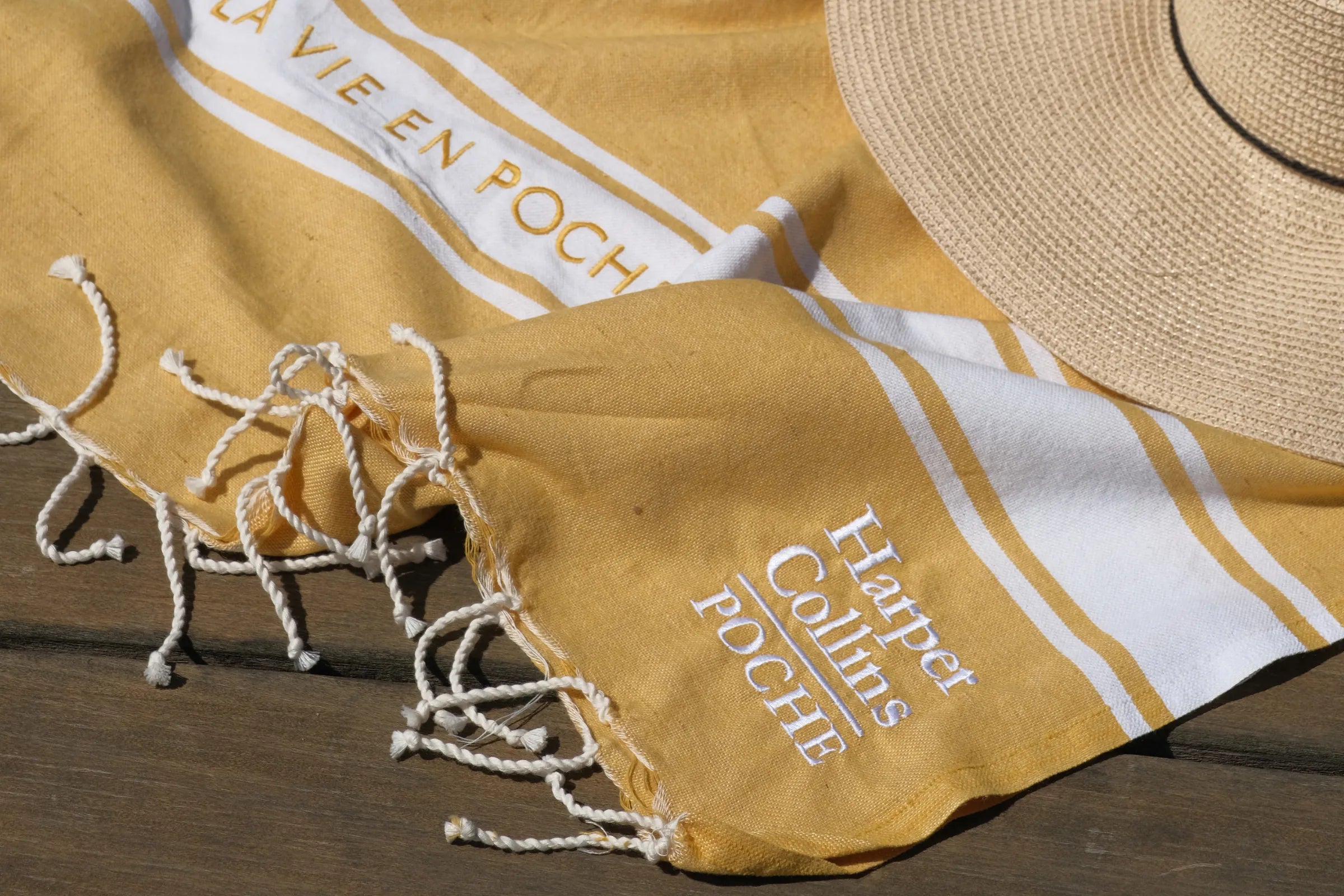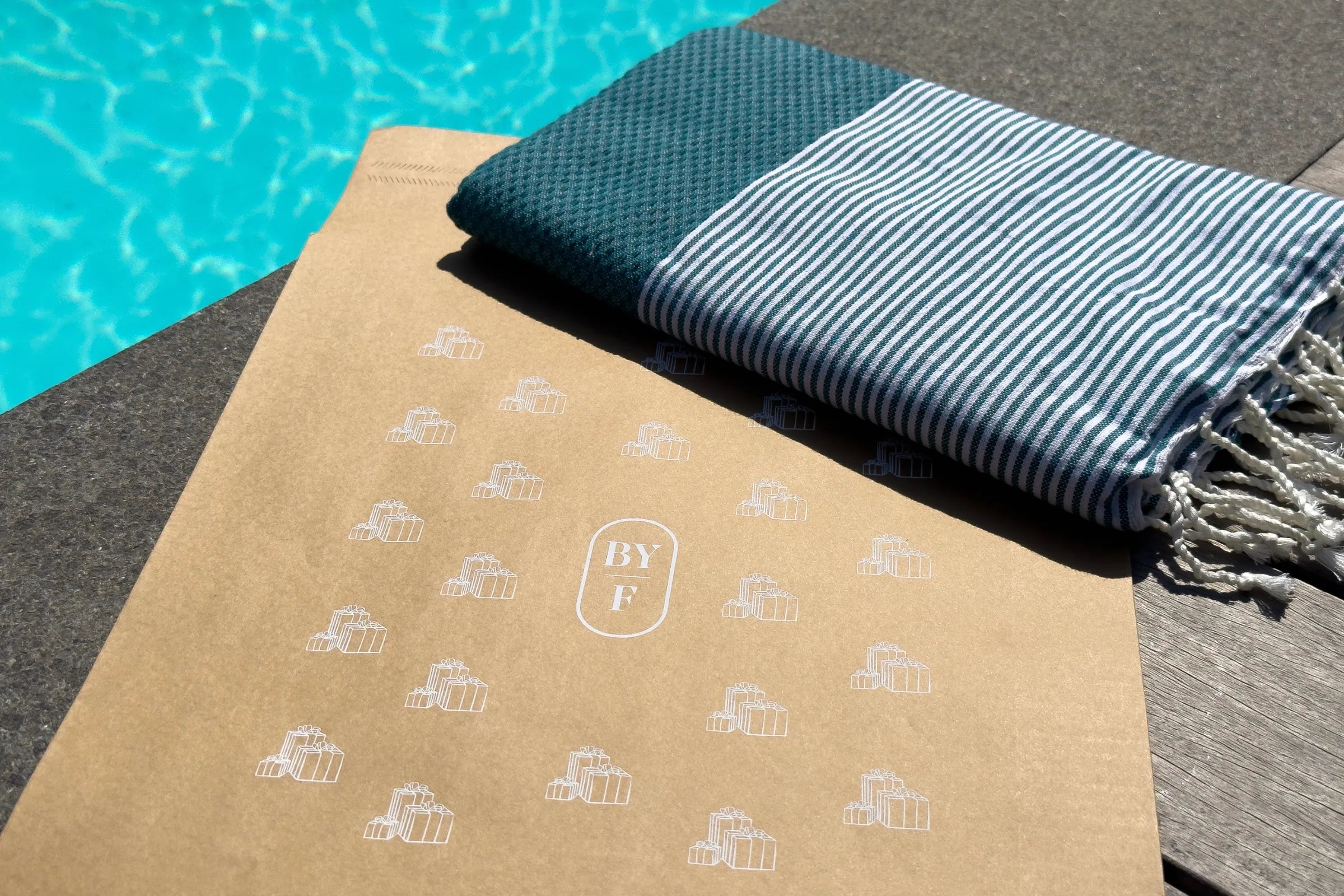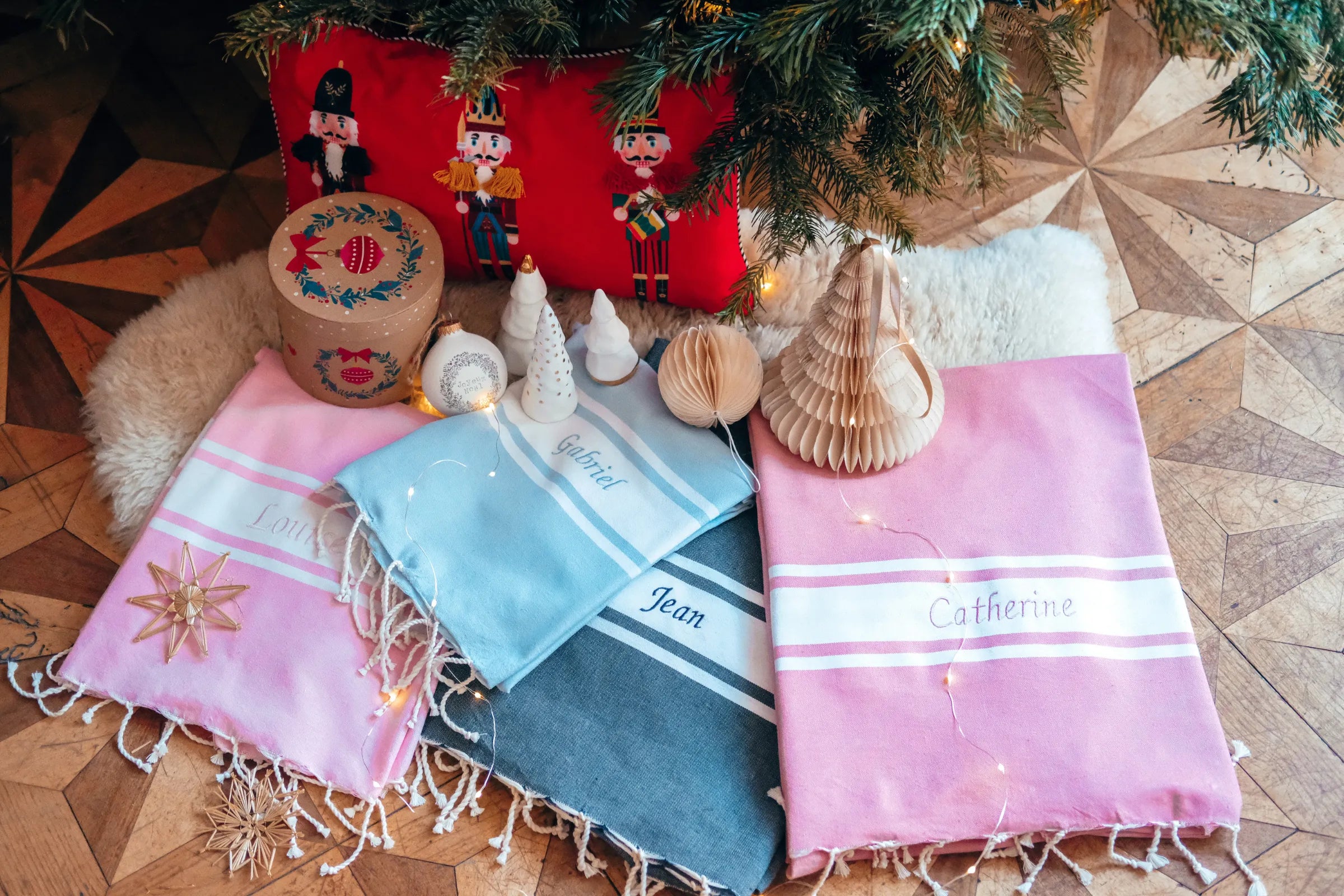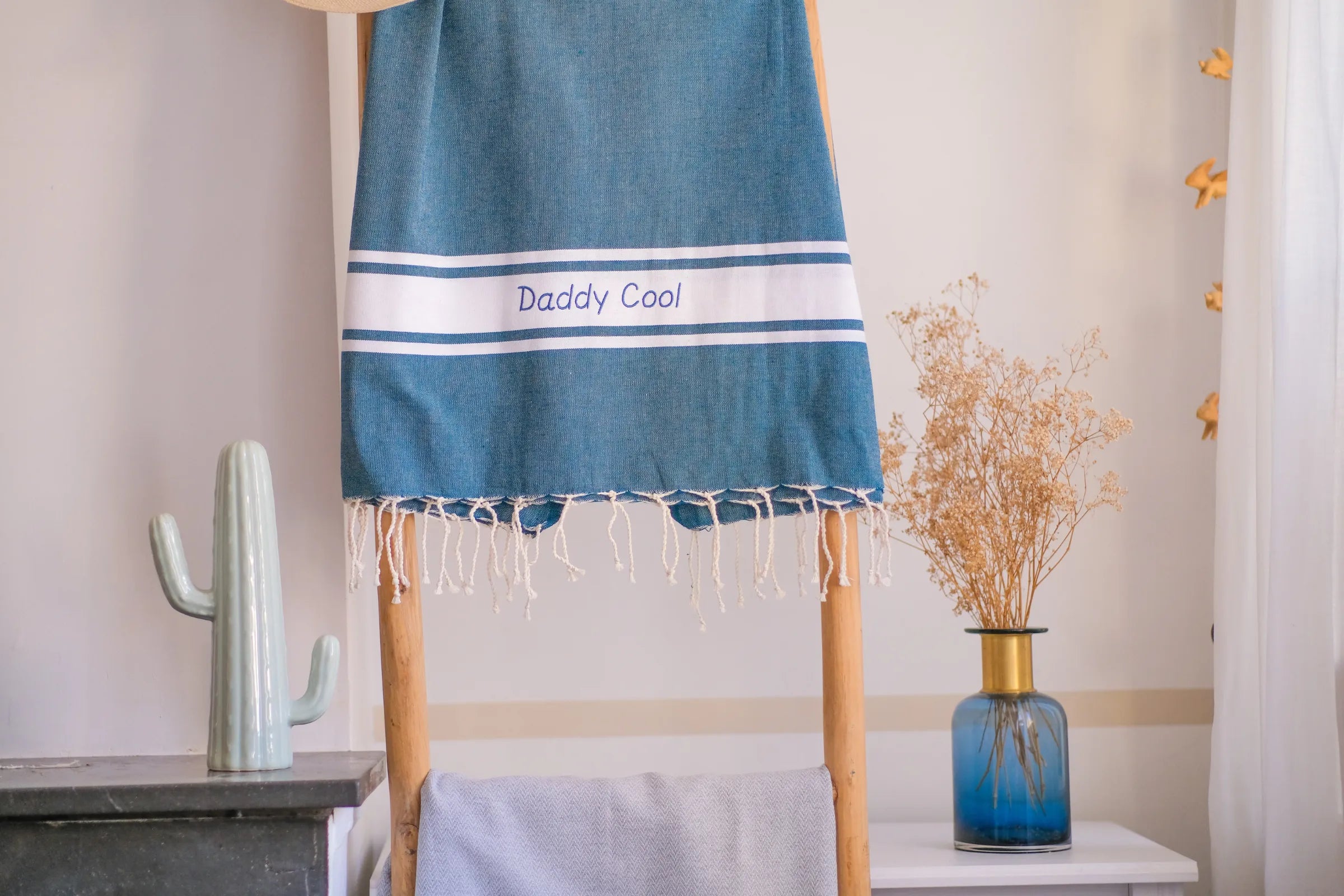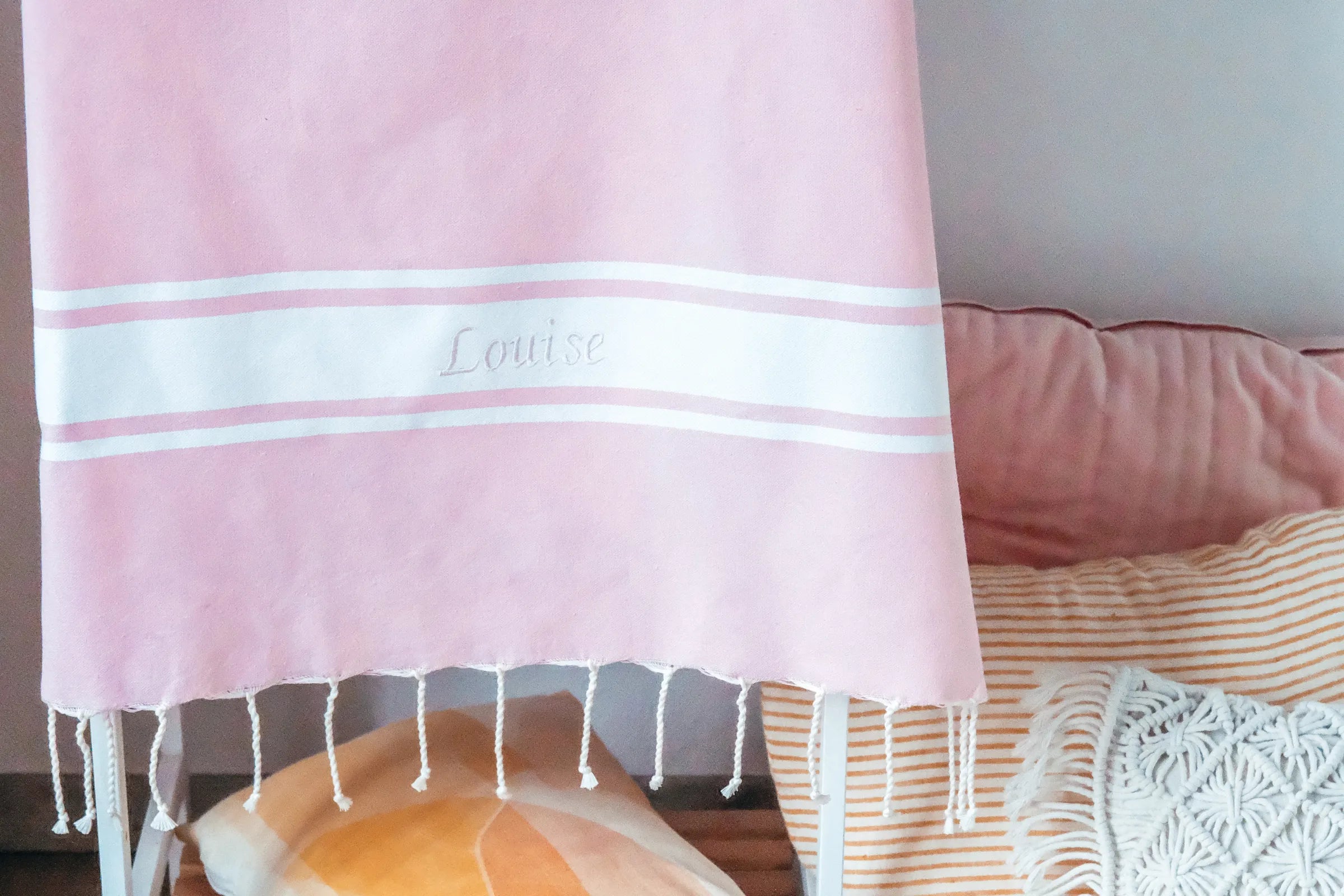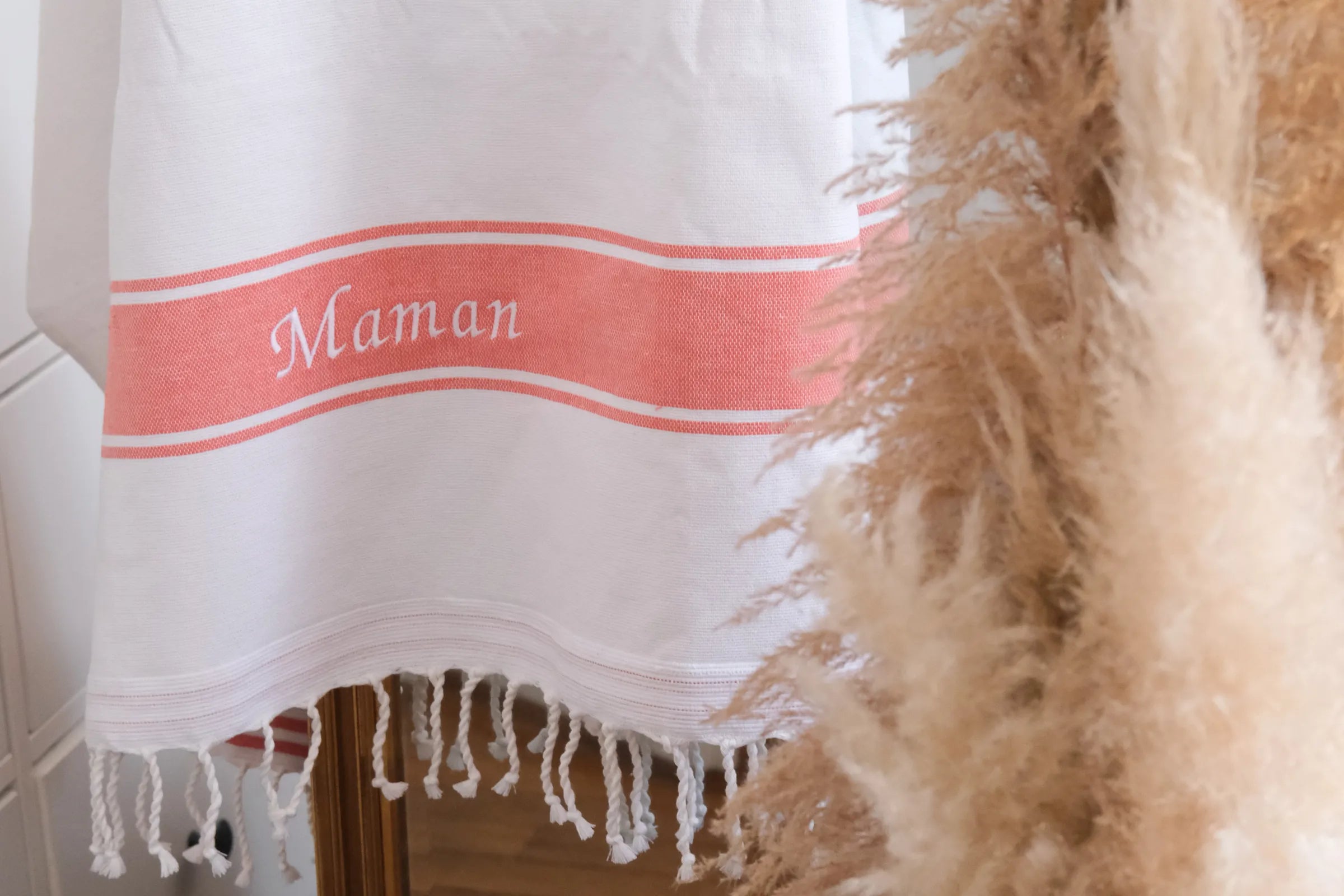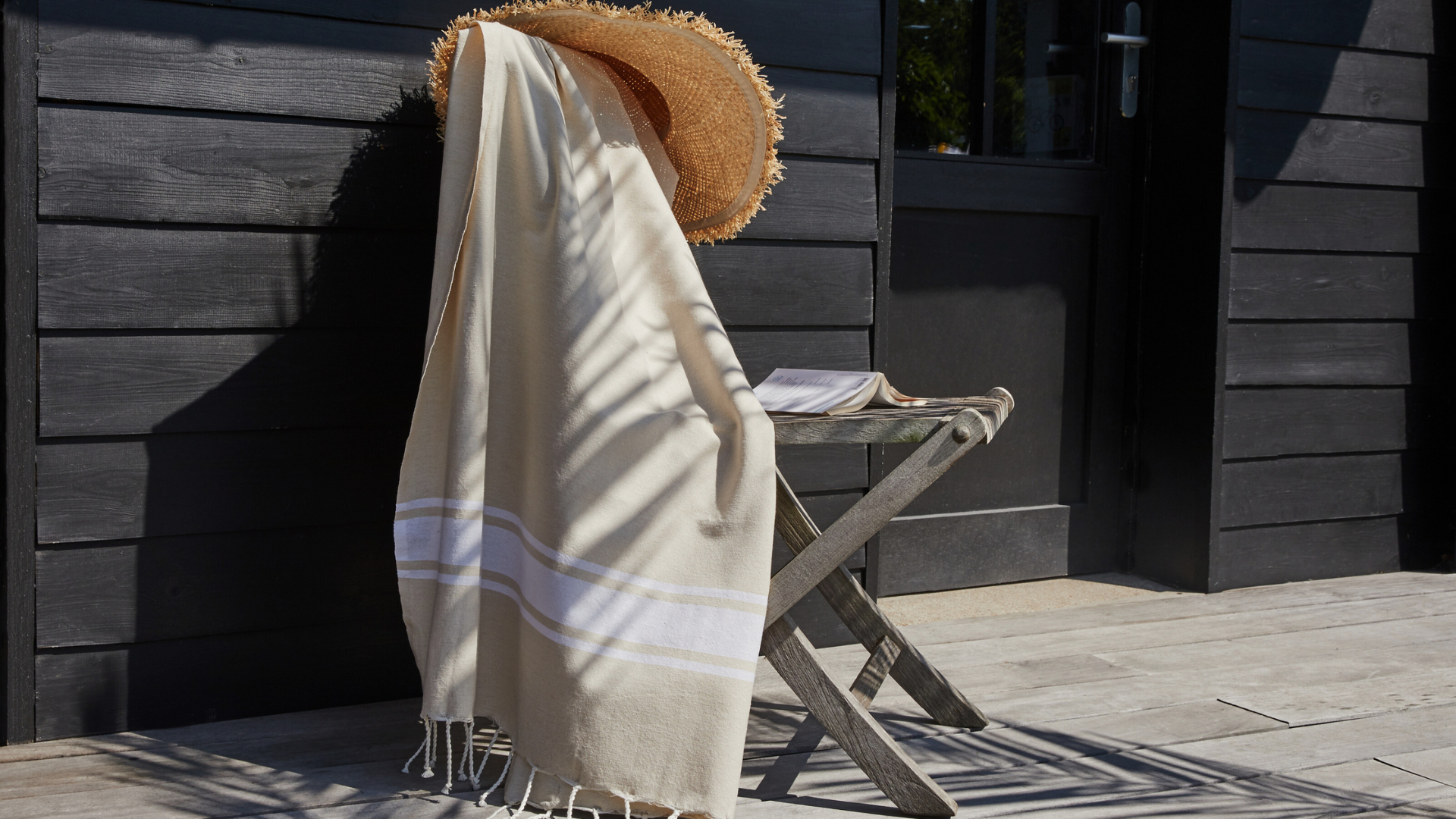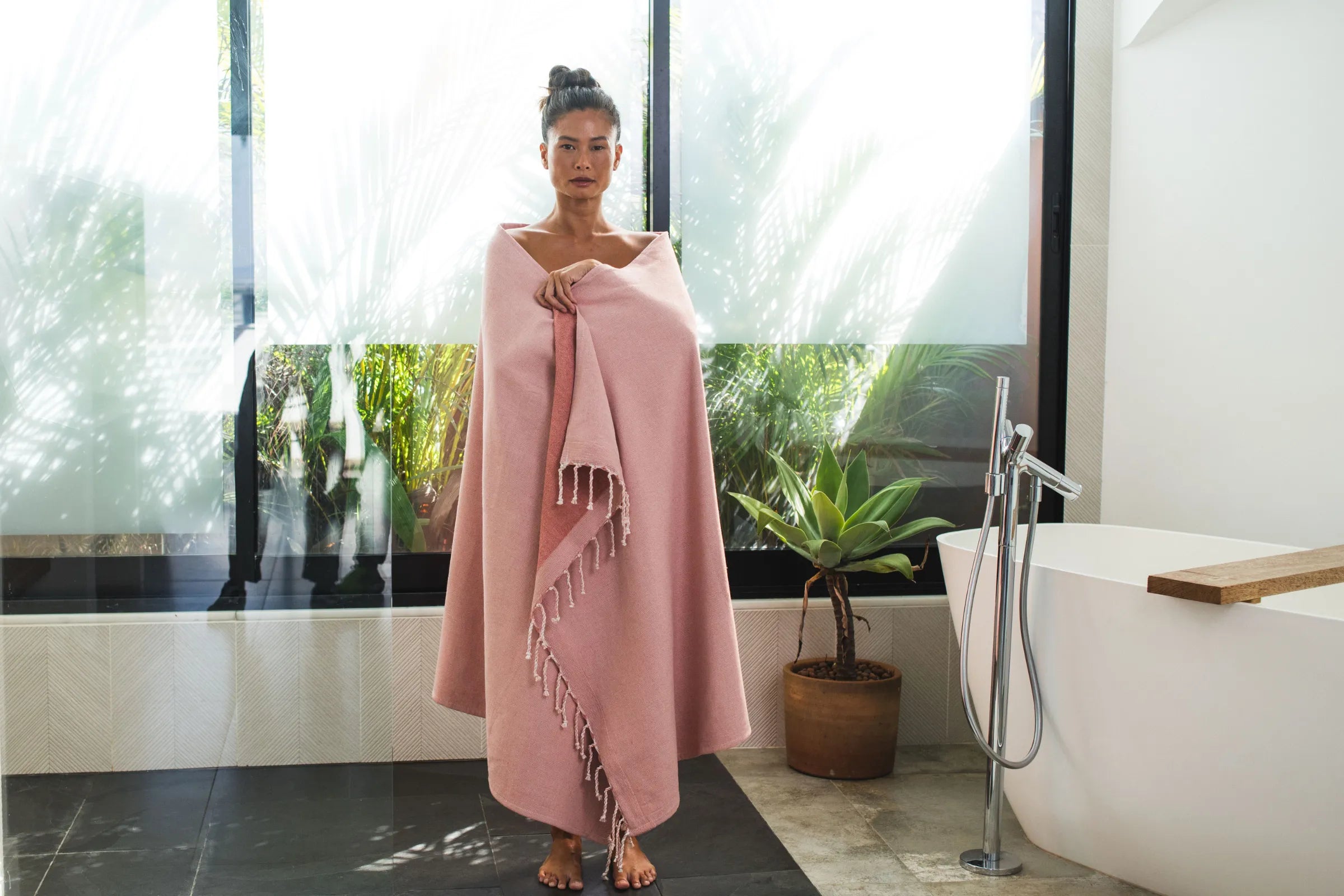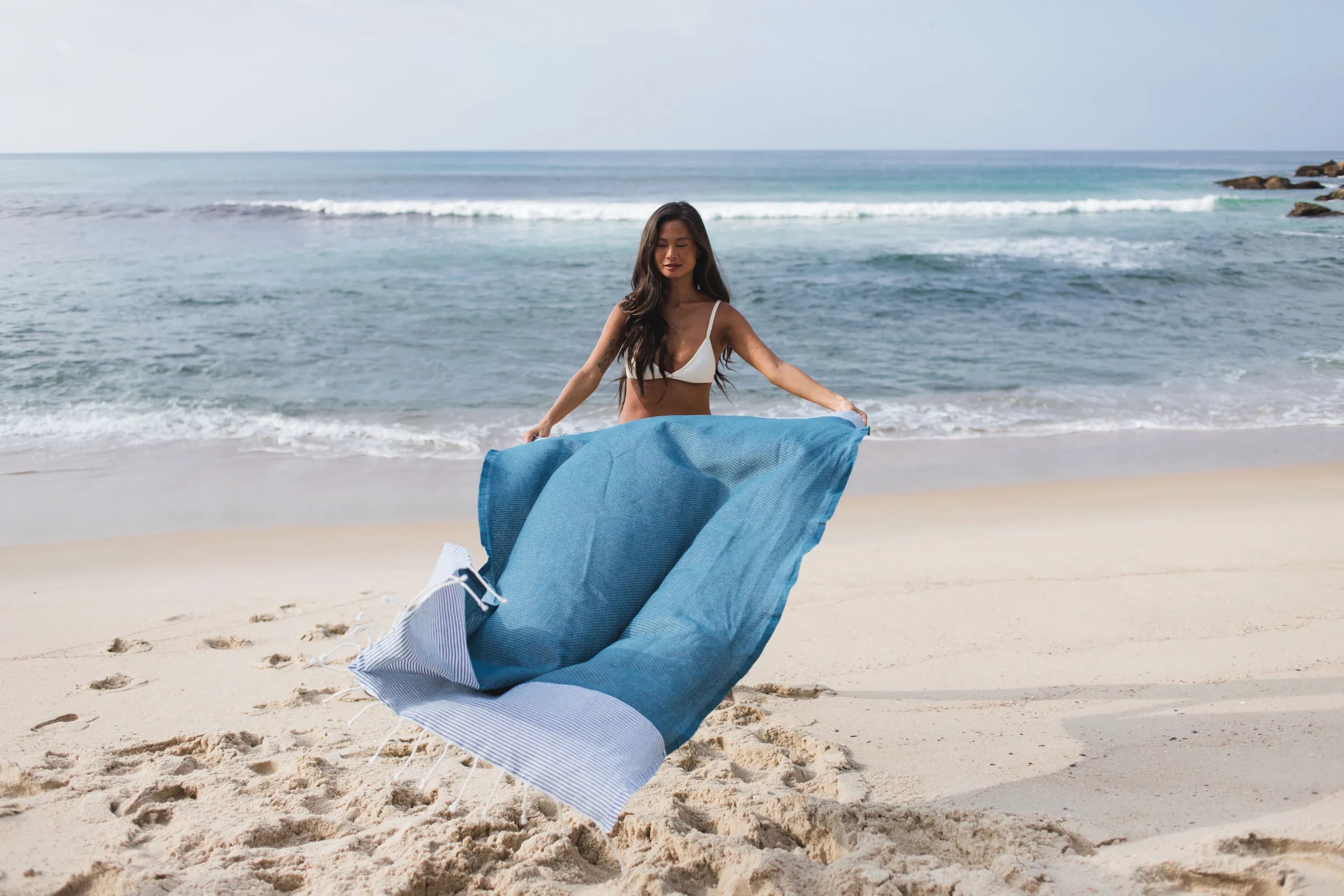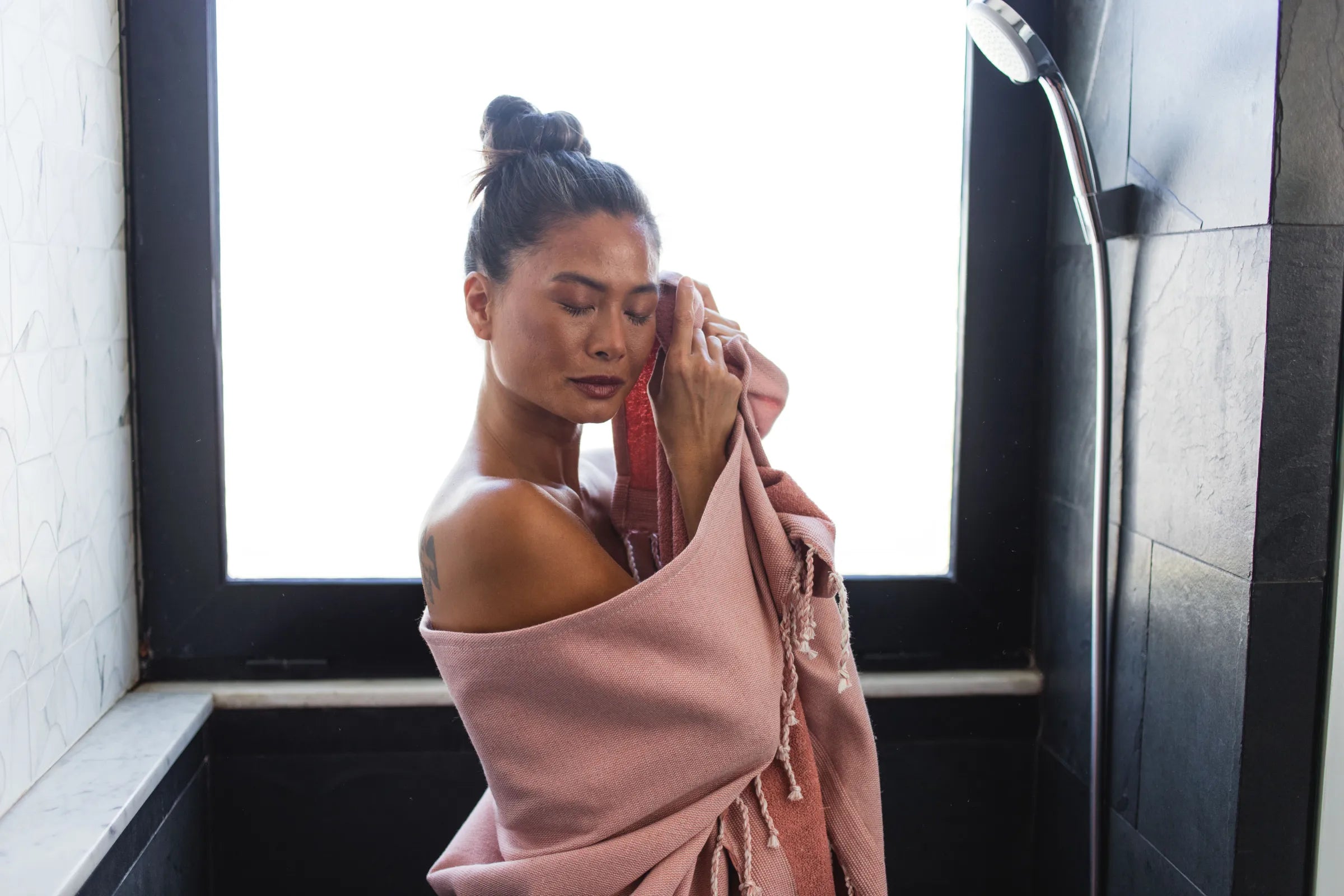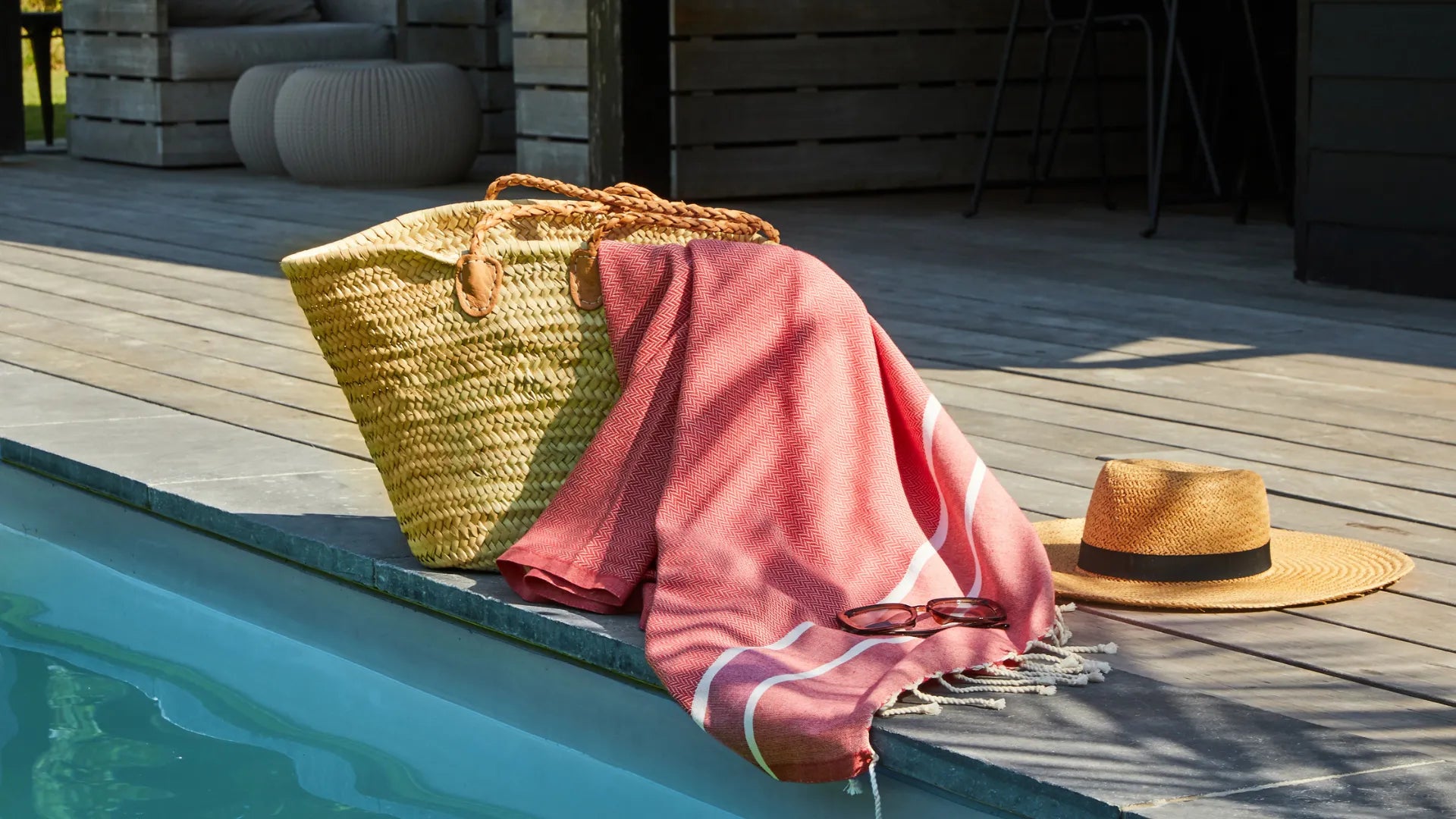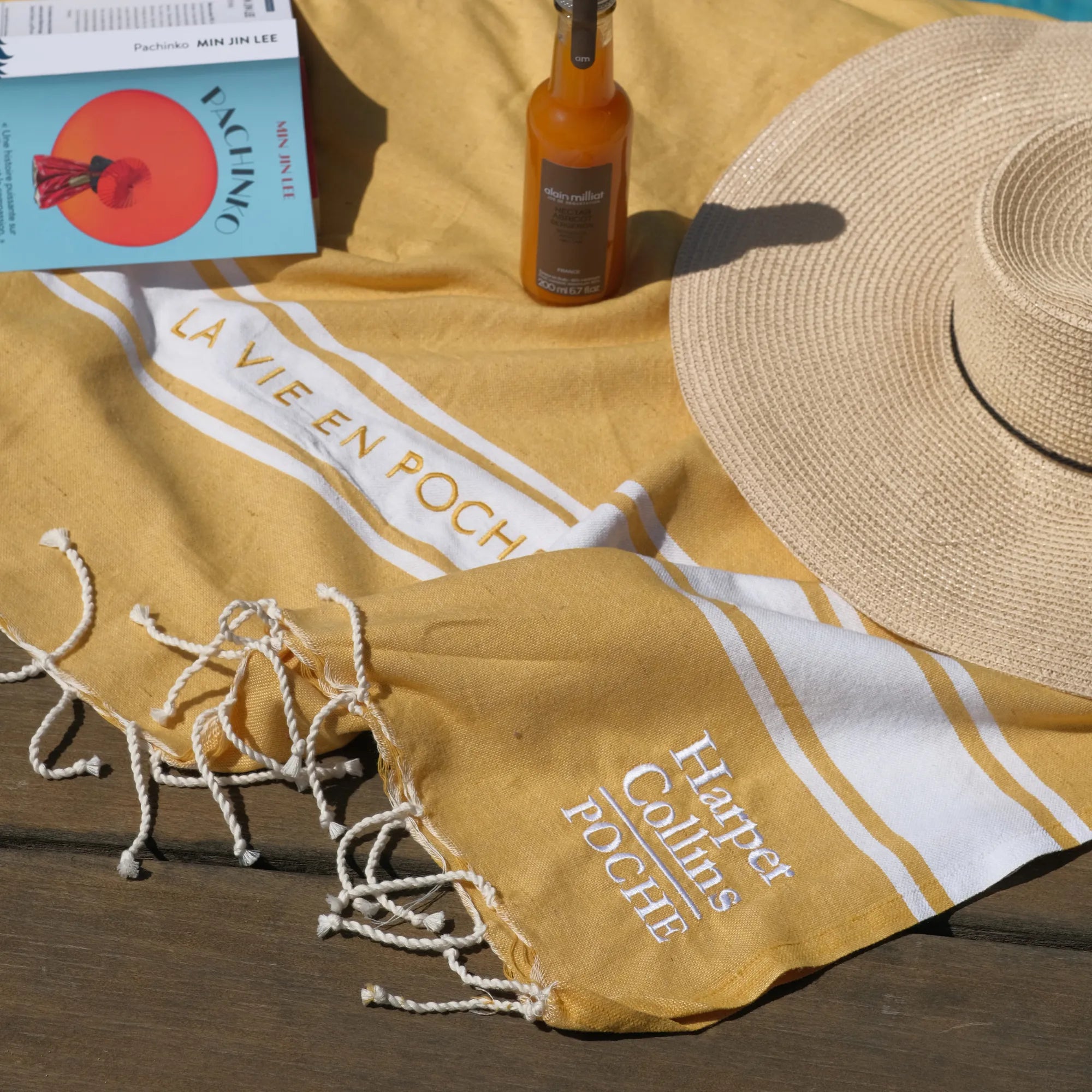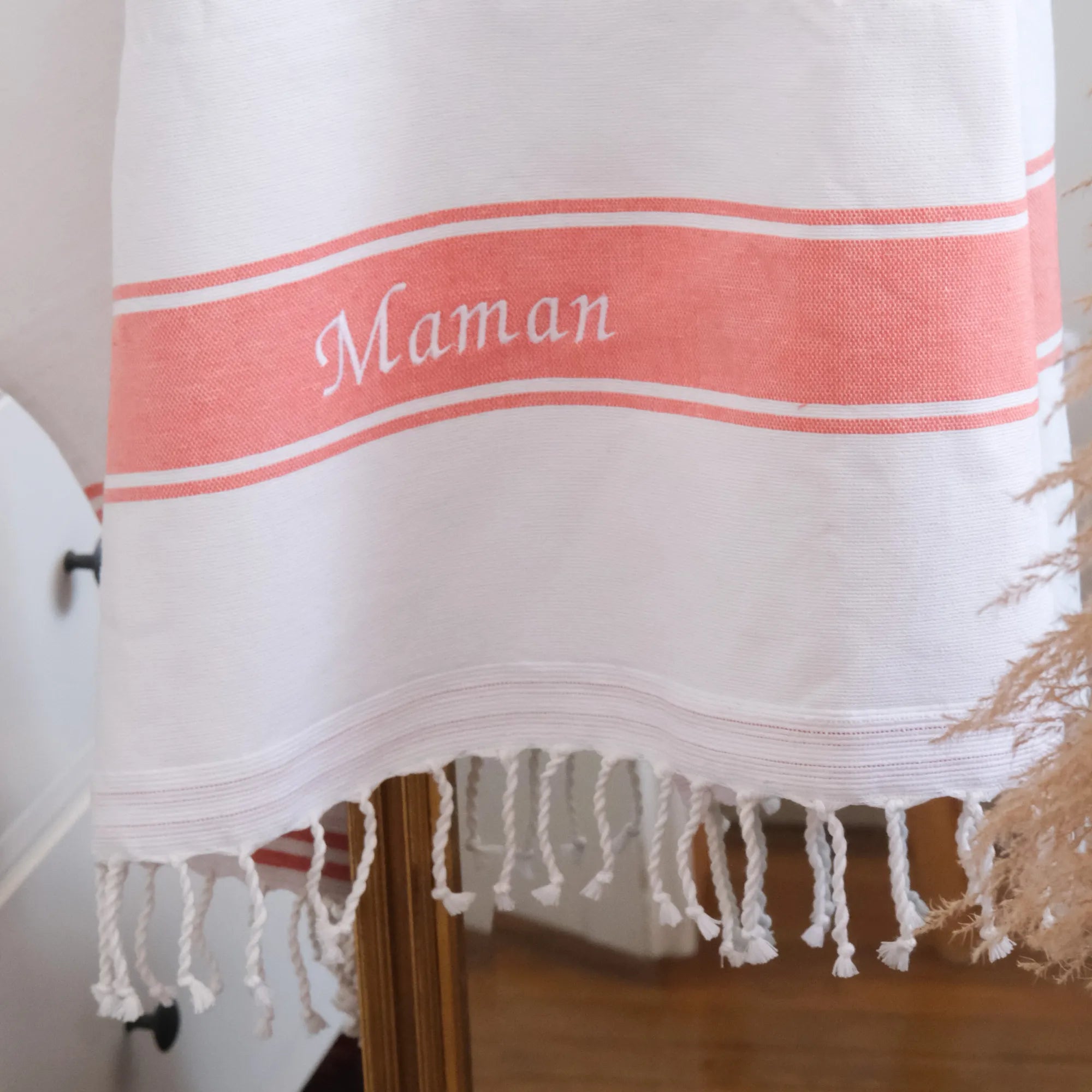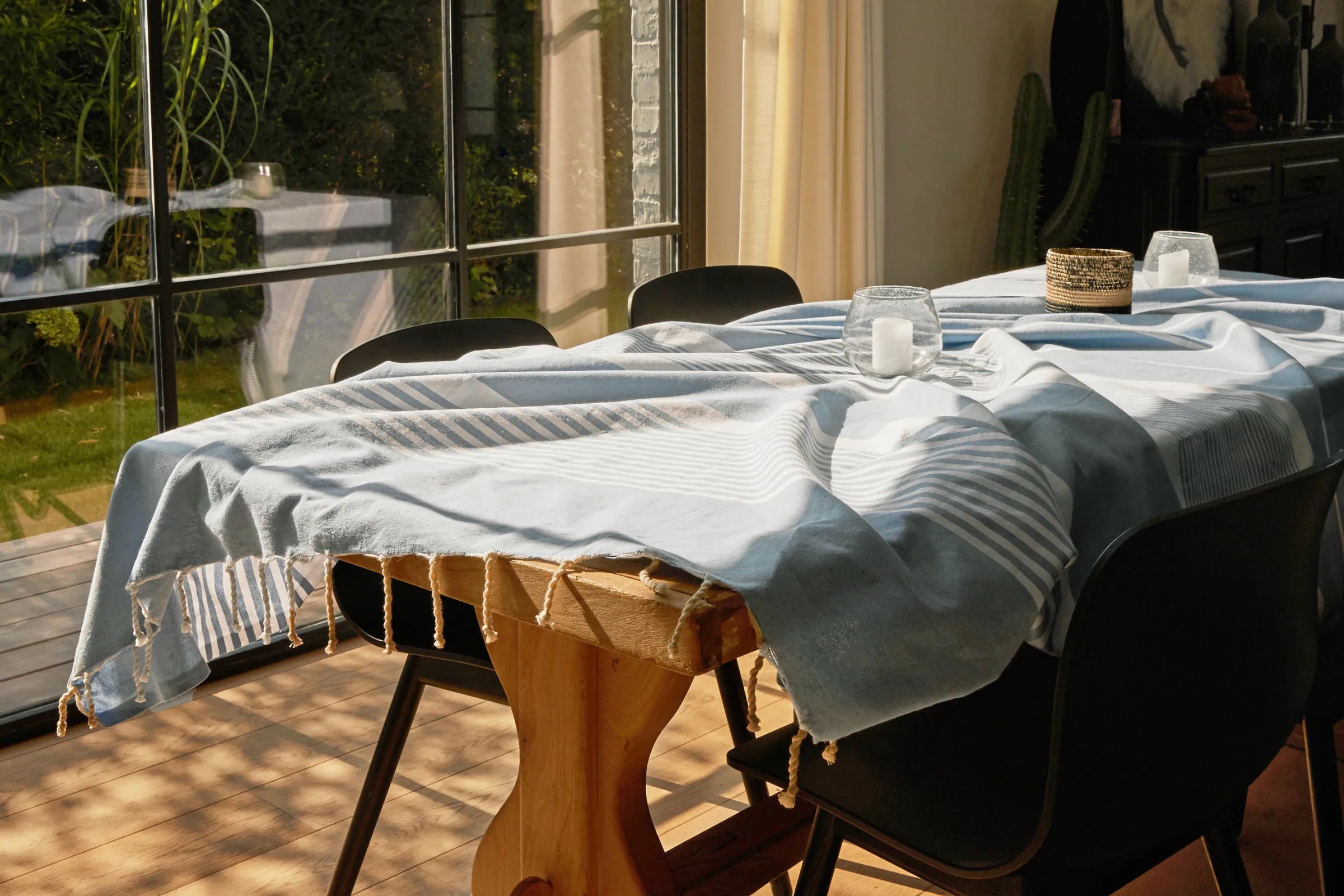The Diary of BY FOUTAS
Everything you need to know about the fouta: history, uses, advantages and customization
Discover the fouta in all its facets : history, advantages, uses, customization and ecological commitment. BY FOUTAS reveals everything you need to know about this versatile and elegant textile .
Comparison: why are BY FOUTAS foutas better than standard foutas?
BY FOUTAS foutas offer superior quality thanks to their recycled cotton, their dense weave and their careful finishes .
Personalization and embroidery: offer a unique fouta
BY FOUTAS foutas can be personalized with high-end embroidery made in France , for a unique and refined gift . Whether for a birthday, a wedding, a birth or a business gift , they are suitable for all occasions.
Fouta BY FOUTAS: an eco-responsible commitment to sustainable consumption
BY FOUTAS foutas are made from recycled cotton , an ecological alternative that limits water and energy consumption while guaranteeing softness and durability .
Unique artisanal know-how: the quality of BY FOUTAS foutas
BY FOUTAS foutas are designed with unique artisanal know-how , guaranteeing quality, comfort and durability .
BY FOUTAS foutas stand out for their handcrafted quality, eco-responsibility and high-end personalization. Made from recycled cotton, they are elegant, durable and available in a wide range for every need: beach, bath, decoration, travel.
The multiple uses of the fouta: from well-being to decoration
From the souk to the beach: how the fouta became a must-have
The fouta is a traditional Tunisian textile, once used exclusively in hammams and sold in craft souks . Made from high quality cotton , it is woven using ancestral techniques that give it lightness and rapid absorption .
Why adopt a fouta? The advantages of a versatile towel
fouta is a lightweight, absorbent and versatile textile, ideal for use as a bath towel, beach fouta, XXL fouta or sofa throw. Unlike conventional towels, it dries quickly, is easy to transport and offers a wide choice of designs and weaves.
Traditional fouta weaving techniques: ancestral know-how
Fouta weaving is an ancestral technique based on Tunisian artisanal know-how . Made from quality cotton , the fouta comes in several types of weaving, each with its own characteristics.
The Tunisian fouta: a textile heritage between tradition and modernity
The Tunisian fouta is an ancestral textile used for centuries in hammams for its lightness and rapid absorption. Originally from Tunisia, it has now established itself as a versatile accessory.
Discover the softness of terry-lined foutas
The terry-lined fouta is an ultra-soft and absorbent towel , ideal for bathing, the beach and well-being. Thanks to its premium cotton weave , it combines aesthetics and efficiency.
Why is the fouta lighter and more compact than a classic towel?
The fouta is the ideal towel thanks to its rapid absorption capacity and express drying .
Why adopt a fouta? Discover its 8 essential advantages
The fouta has many advantages. We focus on 8 of them in this article.
Why adopt a fouta when traveling? The ideal ally for globetrotters
The fouta is an essential accessory when traveling. Light, absorbent and compact , it fits easily into a backpack.
The fouta bedspread: elegance and lightness for your bedroom
The XXL fouta is a lightweight and elegant alternative to classic bedspreads . Thanks to its natural cotton weave , it offers a breathable blanket, ideal for all seasons .
The fouta as a sofa throw: an elegant and practical decorative accessory
The sofa throw fouta is an elegant and practical alternative to classic covers. Thanks to its natural cotton weave , it protects your furniture while adding a refined decorative touch.
Why use a fouta in a spa, sauna or hammam?
The fouta is ideal for use in the spa, sauna and hammam thanks to its rapid absorption, express drying and lightness . Unlike conventional towels, it does not retain moisture and remains pleasant to the touch , even in a humid environment.
The fouta for a picnic: the ally of the outdoors
The XXL fouta is a perfect alternative to traditional picnic mats . Lightweight, easy to carry and dirt-resistant , it offers great comfort for sharing a meal outdoors.
The fouta pool towel: lightness and elegance at the water's edge
The fouta is an excellent alternative to classic pool towels . Absorbent, light and compact , it does not retain moisture and dries quickly after swimming.
The fouta as a pareo: the elegant and practical ally for the beach
The fouta is an elegant and practical alternative to the classic pareo. Its lightweight cotton weave makes it comfortable to wear and allows it to dry quickly after swimming.
Why choose a fouta as a beach towel?
The beach fouta is the practical, lightweight and elegant accessory par excellence. Whether you are looking for an XXL fouta, an organic cotton fouta or a terry-lined fouta , you will find at BY FOUTAS a varied selection adapted to your needs.
Personalized fouta for hotels and guest houses: high-end and elegant bath linen
Personalized fouta is an excellent choice for hotels and guesthouses. Embroidered with the establishment's logo, it adds a touch of elegance and enhances the customer experience.
Why is the personalized fouta an excellent communication medium for businesses?
The personalized fouta is an effective, high-end communication medium. Embroidered in France, it combines aesthetic appeal with ecological responsibility thanks to its recycled cotton.
Offer a fouta as a leaving or thank you gift
A personalized fouta makes an ideal parting or thank-you gift. Carefully embroidered in France, it can be adapted to the recipient's tastes thanks to different colors and styles. Made from recycled cotton, it's both elegant and durable.
Christmas gift: why is the personalized fouta a perfect idea?
A personalized fouta is the perfect Christmas gift. Carefully embroidered in France, it can be adapted to the recipient's tastes thanks to different colors and styles. Made from recycled cotton, it's both elegant and durable.
Offer a personalized fouta for a birthday: a unique and useful gift
An embroidered fouta makes an ideal birthday gift. Practical and elegant, it adapts to all styles and can be used as a fouta towel, XXL beach fouta or sofa fouta. Made from recycled cotton, it's soft, resistant and eco-responsible.
An embroidered fouta for a birth: a personalized and timeless gift
An embroidered fouta is an elegant and useful birth gift. Soft and absorbent, it accompanies baby from his very first days, whether as a fouta towel, blanket or play mat. Made from recycled cotton, it respects the environment and the fragile skin of newborns.
A personalized fouta for a wedding: the perfect gift for guests and the bride and groom
A personalized fouta is an ideal wedding gift. Carefully embroidered in France, it can be given to guests, groomsmen or witnesses as an elegant and lasting keepsake. Made from recycled cotton, it's both eco-friendly and refined.
Why is offering a personalized fouta an excellent gift idea?
The personalized fouta is an original and elegant gift, ideal for any occasion: wedding, birth, birthday or Mother's Day. Carefully embroidered in France by Cécile, our qualified embroiderer, it combines aesthetics and durability.
The fouta: a beach and bath towel designed to last
Recycled cotton fouta is an eco-responsible alternative to conventional towels. It reduces textile overproduction, consumes less water and energy, and remains soft and resistant over time.
Fouta vs Terry Towel: Which is the Best Option?
Fouta or terry towel: which one to choose? If you are looking for a practical and elegant towel , the fouta is a perfect alternative to the terry towel.
The fouta, a beach towel with a thousand facets
The fouta is an elegant and refined accessory , available in various patterns and trendy colors . Thanks to its unique aesthetic and practical side , the fouta fits into all interiors and exteriors.
Why is fouta an excellent alternative to terry towels for spas and wellness institutes?
The personalized fouta is the ideal alternative to terry towels for spas and wellness institutes. Lightweight, absorbent and quick-drying, it guarantees an upscale, eco-friendly experience.
The fouta as an advertising textile: a customizable object that lasts
The personalized fouta is a durable, high-end promotional textile. Embroidered in France, it adds value to a brand while being both useful and ecological. Made from recycled cotton, it's a promotional gift of choice, ideal for business events, marketing campaigns and high-end promotional items.
High-end promotional gifts: the fouta for a premium brand image
The personalized fouta is the ideal promotional gift for a premium brand image. Embroidered in France, it reflects elegance and exclusivity. Made from recycled cotton, it promotes an ethical and responsible approach.
Why do communication and event agencies choose the personalized fouta?
The personalized fouta is a premium communication medium for agencies and events. Embroidered in France, it promotes a brand while being both useful and environmentally friendly.
The fouta: an original business gift for companies and CSEs
Offering a personalized fouta is an original idea for companies and CSEs. Elegant and embroidered in France, it reinforces brand image while being both useful and ecological.
Mother’s Day, Father’s Day: why is the fouta an ideal gift?
A personalized fouta is an ideal gift for Mother's Day and Father's Day. Carefully embroidered in France, it can be adapted to the recipient's tastes thanks to different colors and styles.
The fouta tablecloth: elegance and practicality with the classic and striped XXL foutas
The XXL fouta is ideal as an elegant and functional tablecloth . Its cotton weave gives it a fluid drape , perfect for a convivial table.
